CSF





President
Editor - In - Chief Jacqui Brown
Chef Chef Juliana Ramero
Chef Chef David Mizon

Publisher Runaway Media
Web csfint com
Email info@csfint com
What a catastrophic few months we have had, with so many countries succumbing to the dramatic elements that mother nature has shared with us
Retaliation maybe for man’s ongoing abuses of the environment?
It appears that our generation could be bearing witness to the future norm, so eventually the residence of planet earth may have to sit up and pay greater attention or are we all waiting until it’s too late?
Spain, Portugal, Greece, Canada and now the island of Maui, Hawaii have seen devastation One that wrecks people lives, with hundreds killed and thousands displaced
Amidst the wreckage and carnage that the fires leave behind and the global media refocus their attention elsewhere, take a closer look at the locations that have suffered and you will gradually see the hundreds of artisan food producers with no homes, no work and for many no hope
Standing amongst the ashes that were once trees displaying a vibrant abundance of olives and nuts, have been replaced with smouldering embers
Lonesome shepherds starring at grey charred pastures, where their cattle once grazed, their flocks could not escape the inferno`s that engulfed them The milk supply from the herds that once went to the local cheese producers have literally gone up in smoke, so too has production
The beehives and bees that once produced the local honey, supplied local restaurants and local weekday markets, have disappeared without trace
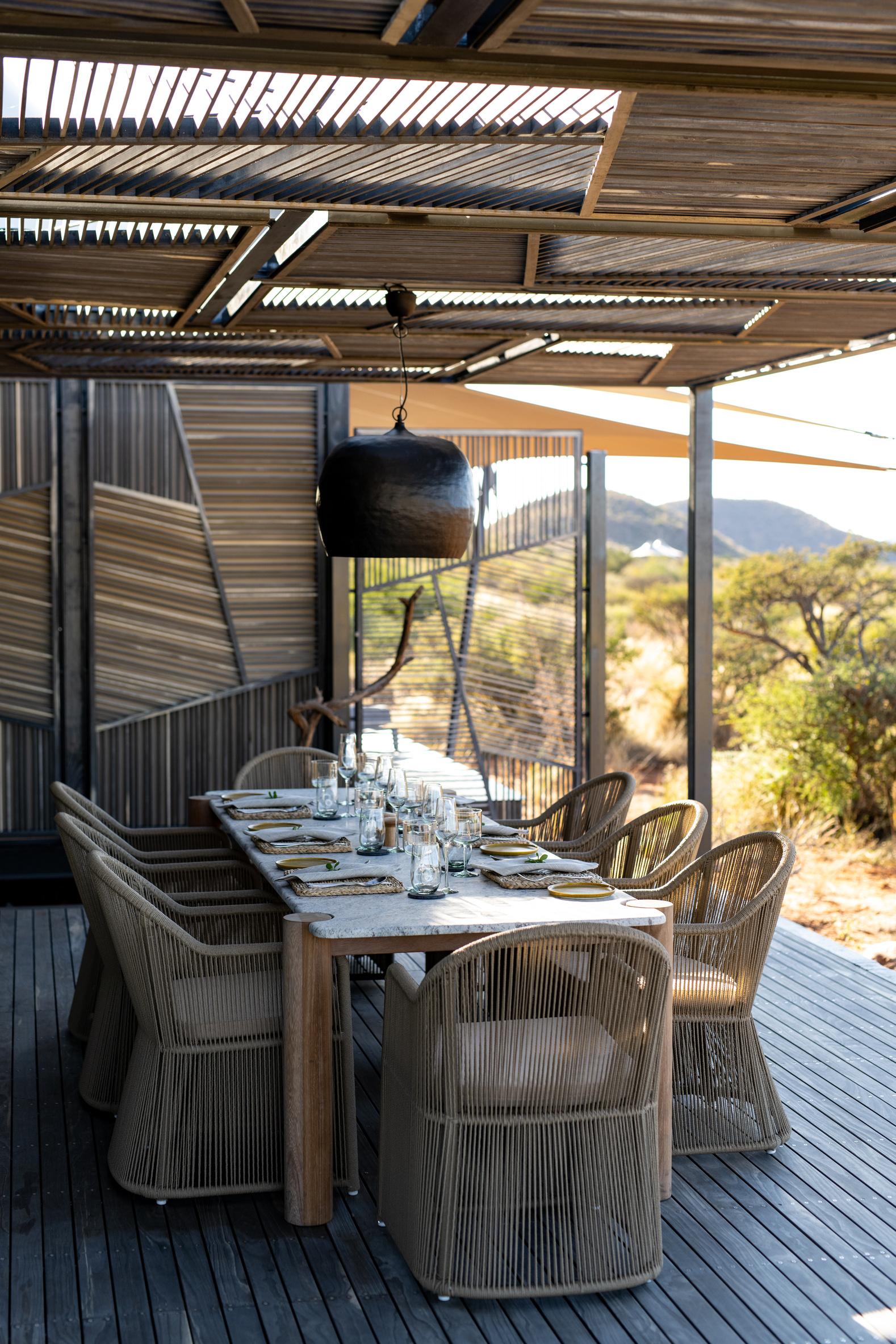
On the opposite end of the scale we are seeing towns and villagers literally drowning, as El Nino pours its contents on Peru
Peruvian farmers have lost crops and no longer able to put food on the family table, or make a living from selling their produce, leaving both farmer and villages running the risk of hunger and starvation
CSF-int was created to help artisans suffering these very real issues and we are doing the best we can

We are still young and increasing our members and support, (now with a presence in 59 countries around the world), sadly the amount of catastrophes we face are too numerous and greater support is needed to be able to financially assist
I call upon all members in all countries to help with this growing global issue, create a fund raising event and help support the food producers that lose everything in these natural disasters
Together we can make a difference, together we can help retain cultural gastronomy, culinary heritage and keep traditional skills alive for the next generation to come
CSF Int Alan Coxonpg 12
Artisan Moreish Mocha Tart
Pg 7
Artisan Coffee Co.Your next coffee ritual
Pg 10
Moreish Mocha Tart by Ashley Palmer-Watts
Pg 12
Natures Bounty
Top 3 places to forage
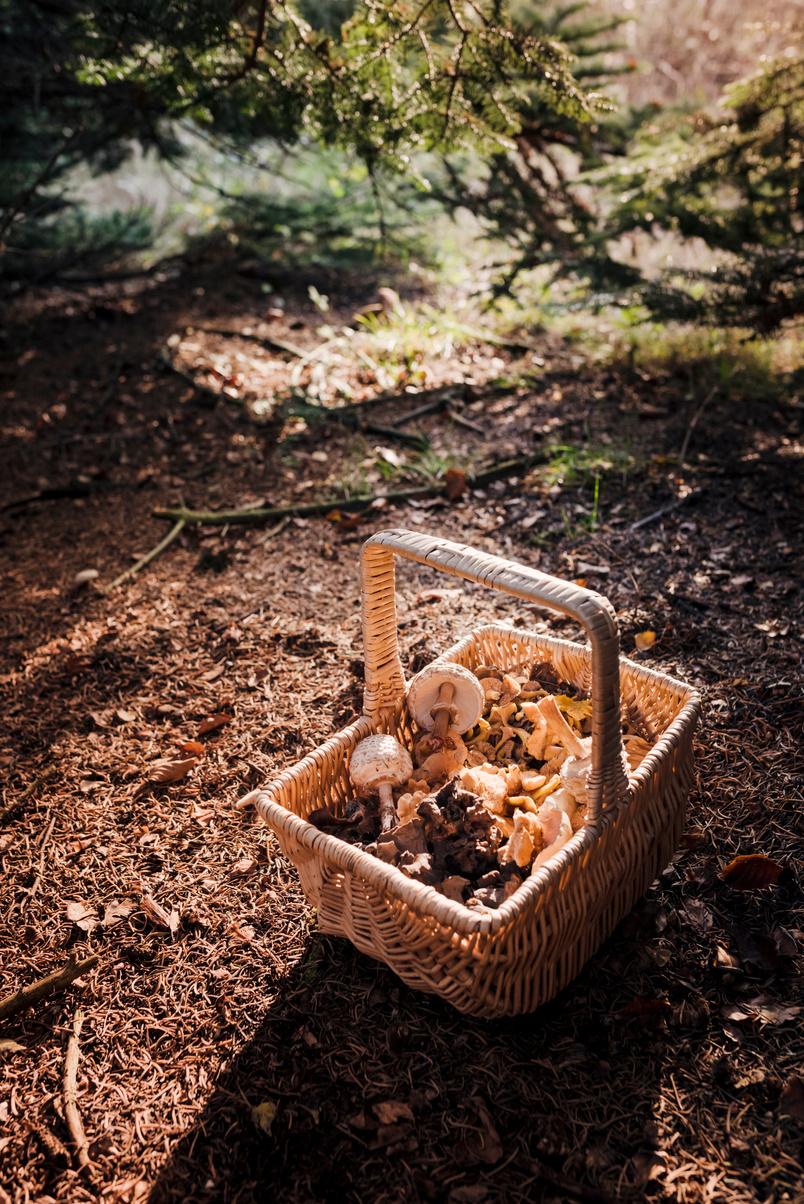
Pg 15
Global Trends in the Hospitality Industry
Pg 18
The Food Consulate
CSF INT Educational pilot scheme launched

Pg 22
Sip & Savour
Exploring the Vineyards of Iberian Splendour

Pg 26
Tasting Spain
Pg 28
Lobster

From rich fisherman's food to gastronomic delicatessen
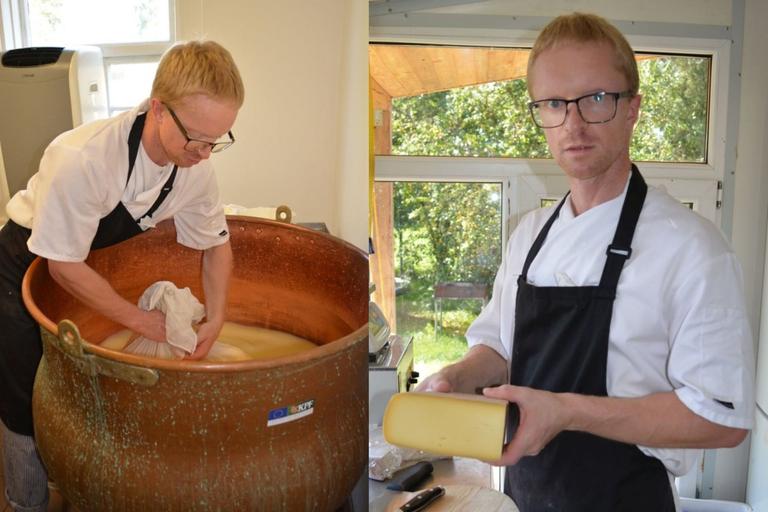
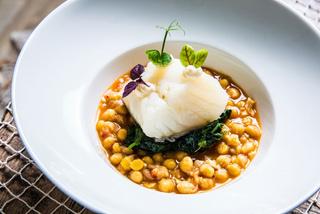
IN THIS ISSUE WE DISCOVER THE FLAVOURS OF SPAIN, SHINE THE SPOTLIGHT ON FORAGING AND ENJOY A DECADENT MOCHA TART
Pg 41
In Loving Membory
Mr Audrius Jokubauskas
Pg 36
Pg 34



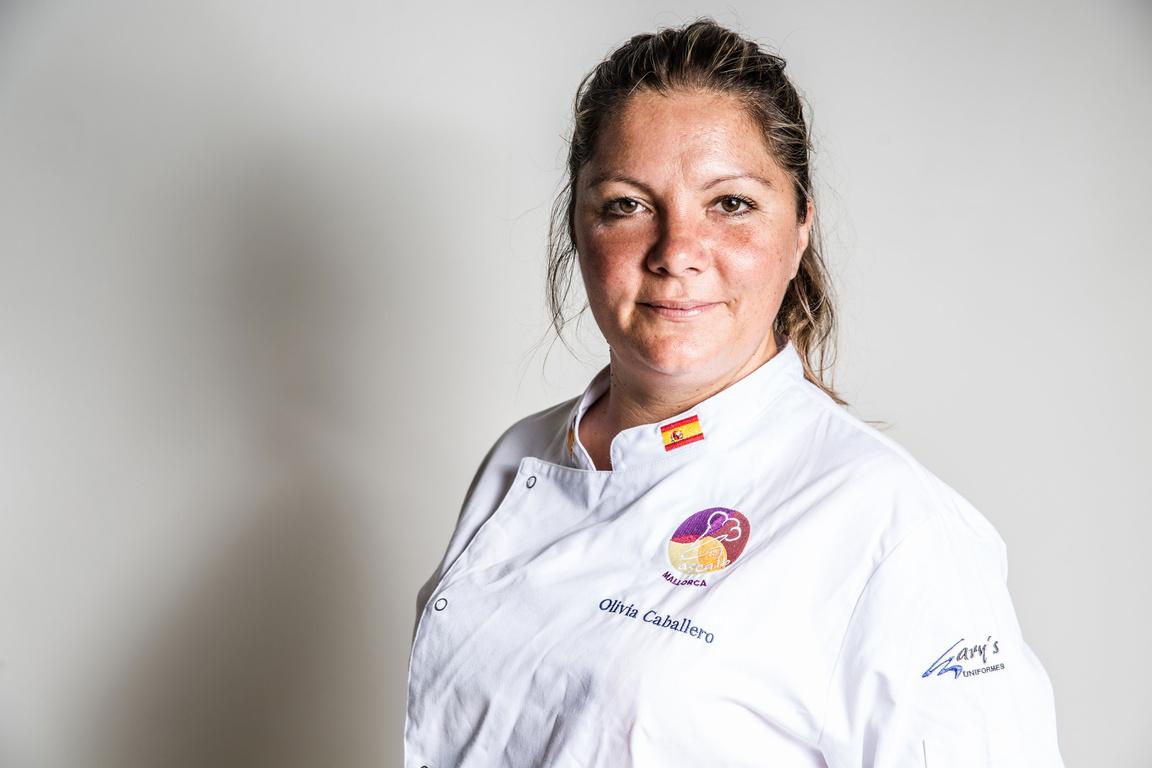

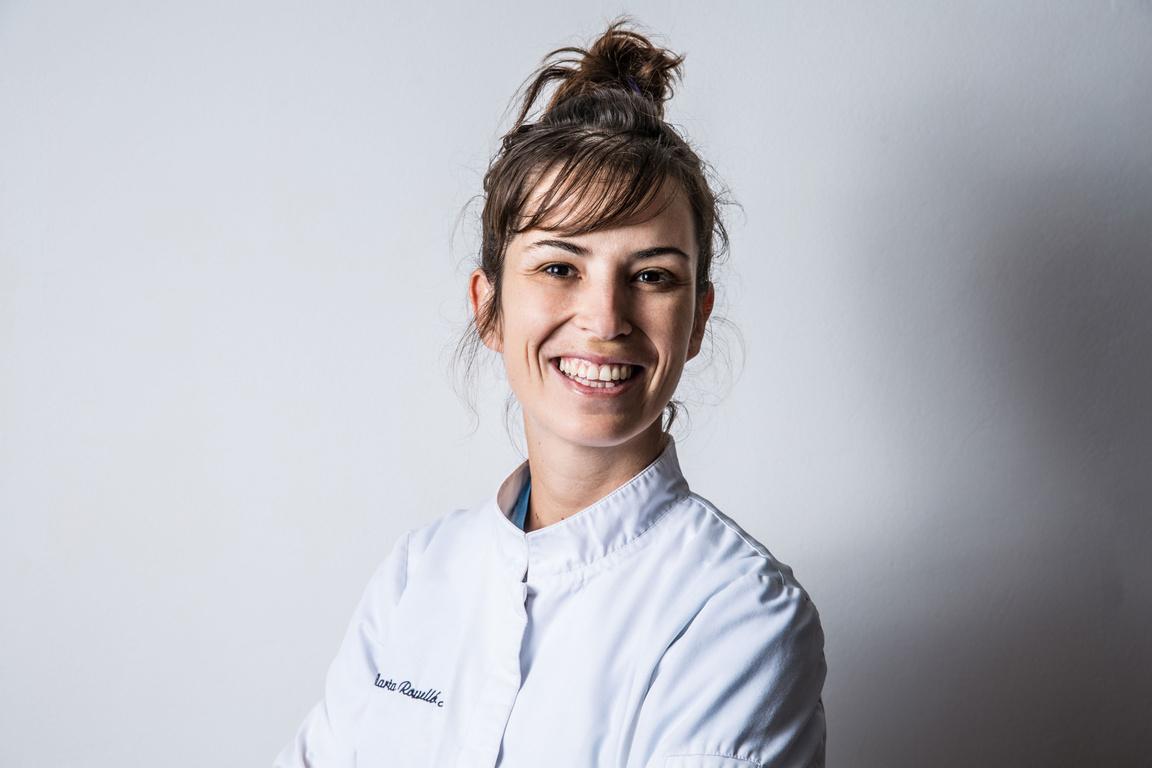


David hopes to include at least one CSF Junior Bakery Members, this will be a demonstration led with an element of hands on workshop


To help David understand the size of venue required, location with the right equipment, he would like to understand what dates would work for people later in the year
To register your interest please send an email with your preference of date of the event to:
davidmizon@yahoo co uk
JULIANA ROMERO TOMEU CALDENTEY LUIS AZNAR CHEF MARTA ROSSELLÓ ASHLEY PALMER-WATTS OLIVIA CABALLERO CHEF KOLDO ROYO AUDRIUS JOKUBAUSKAS DAVID MIZON A CSF Charity 2 Day Bread Baking Course, sponsored by Foricher les Moulins and hosted by International Baker David Mizon. The course will unlock some of the skills and science behind making ha range of breads, burger buns, brioche, bagels etc

Inspired by the elegance of champagne houses and guided by his culinary prowess, Ashley Palmer-Watts, previously Chef Director of The Fat Duck Group, including two Michelin-starred restaurant Dinner by Heston Blumenthal, now leads an exceptional team at Artisan Coffee Co. Together they have embarked on a revolutionary journey in the realm of coffee, focusing on the art of blending and mastering flavour notes to craft the most exquisite coffee experience on any occasion.


We have a coffee for every time of day and every mood: our signature coffee collection offers something for everyone, ensuring you'll discover a coffee you'll love Moreover, we understand the importance of finding balance in your daily rituals so we’ve developed both decaf and half-caf blends that are just as delicious as your fully caffeinated coffees
Each blend we offer is crafted to deliver more than just a simple coffee hit – it's an experience filled with delightful flavours to savour From carefully selected beans to the precise brew method, our coffee is roasted to perfection and expertly blended for impeccable balance The result is an array of seven delectable characters that beckon you to settle down, indulge, and enjoy Whether you prefer pods, coffee bags, whole beans, or preportioned ground coffee packs, we have the perfect coffee for you
Unlike the generic offerings from high street chains, our blends are the result of the expertise of some of the most exceptional professionals in the industry
We firmly believe that great coffee shouldn't be complicated, and it’s our mission to help you achieve barista-level brews at home All it takes are the finest, highest quality beans, expertly blended to perfection and sealed for ultimate freshness
Our approach to blending is truly one-of-a-kind We start by selecting the world's finest specialty grade beans, treating them thoughtfully and precisely during the roasting process to preserve their natural aromas and enhance their full potential Our ratios and roast profiles are meticulously fine-tuned to ensure consistently brilliant results across all brewing methods
Embracing pioneering methods, we lock-in twice the aroma, elevating the taste experience to new heights and delivering an unparalleled coffee experience that truly stands out At Artisan Coffee Co , we are dedicated to providing you with the ultimate coffee enjoyment, offering you a unique blend that combines expertise, passion, and the highest quality ingredients page 7
The way we start our day can significantly impact its course – feeling rushed, stressed, and unfocused often leads to a hectic and unproductive day. However, by beginning the morning feeling strong and centred, we set the stage for a calm, productive, and stress-free day ahead.
Taking some time for yourself is crucial, and what better way to begin than with your morning coffee? The simple act of savouring that first sip of perfectly brewed coffee can be a transformative way to greet the new day with clarity and a positive mindset

Whether you delight in rich and chocolatey flavours or prefer something more fragrant, nutty, or fruitforward, you’ll find something you love in our signature collection And remember, your taste preferences can evolve over time, so don't hesitate to explore new options
Find a tranquil corner where you can truly savour this sacred moment, whether it's in a favourite chair or gazing out across the garden Hold your coffee cup in both hands, feel the warmth on your palms, inhale the enticing aromas, and take a few deep breaths before savouring the first taste
As you enjoy your coffee, take a moment to reflect on your feelings, contemplate the previous day's events, and set intentions for the day ahead You can do this internally or put pen to paper and commit your thoughts to writing You may even choose to combine your coffee ritual with a daily journal practice, or as time to organise a to-do list and prepare for the day ahead Do what feels most natural and uplifting for you
Resist the temptation to gulp down your espresso in a hurry for the sake of a quick caffeine buzz Instead, seize this opportunity to pause and cultivate awareness that each day holds boundless opportunities


By mindfully enjoying your coffee, you not only slow down and embrace the present moment but also enhance your overall well-being
Are you ready to embark on a journey of pure pleasure, relishing every cup, every day?


Ashley
rich
incredibly moreish mocha tart is certainly a kind of dessert that solicits
An indulgent chocolate dessert to swoon over and when served alongside the perfect Artisan coffee, you’ll soon be in line for host of the year.
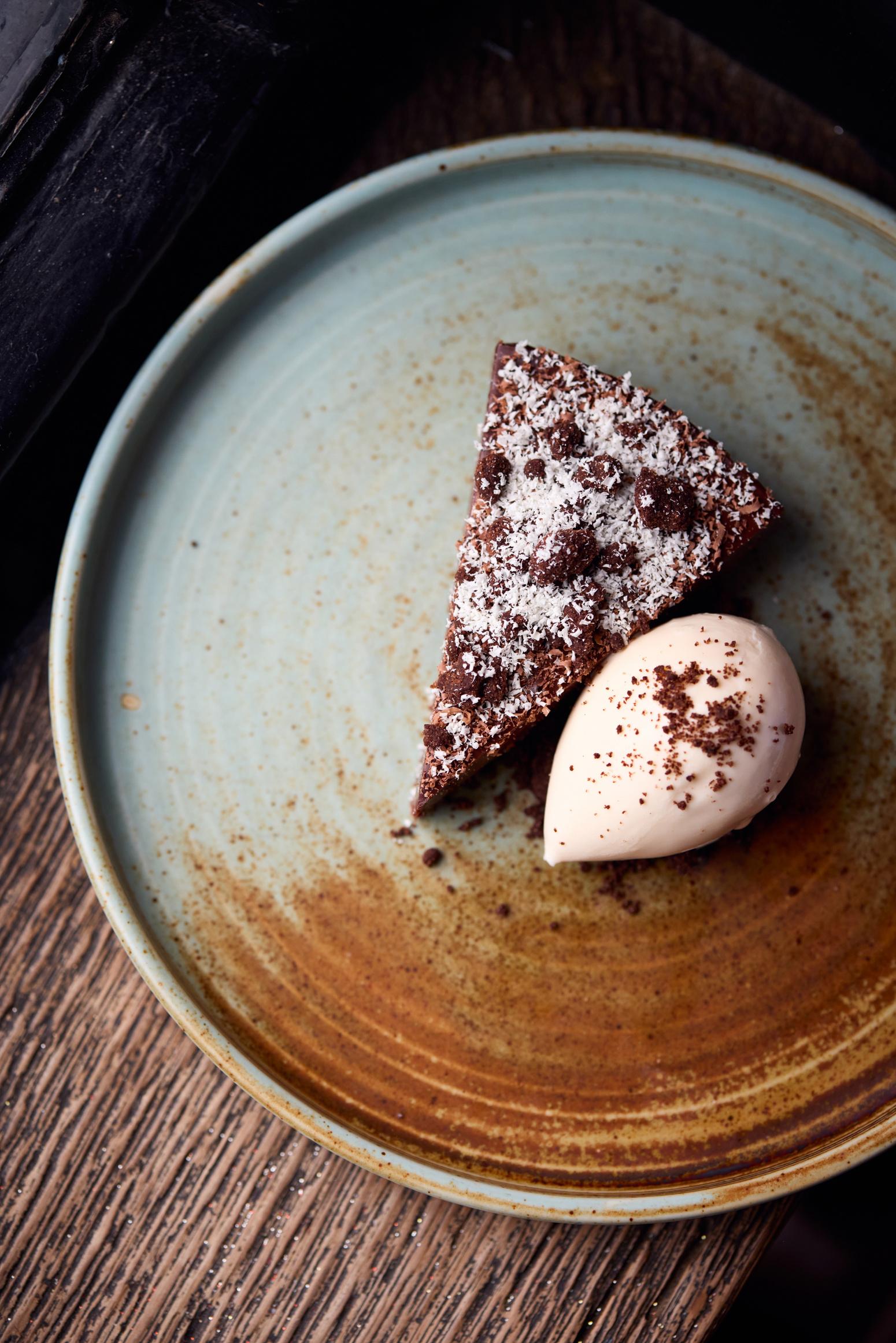 Palmer-Watts’
and
a “more please”.
Palmer-Watts’
and
a “more please”.
Makes 6-8 Slices
YOU WILL NEED:
18cm Spring form round tin
Greaseproof baking paper
FOR THE BASE:
165g Baked chocolate crumble mix (See below)
25g Butter
FOR THE CHOCOLATE CRUMBLE MIX:
125g Golden caster sugar
125g Plain flour
60g Cocoa powder
80g Butter
1 Pinch of salt
FOR THE CHOCOLATE GANACHE:
200g 65% Dark chocolate
200g Single cream
50g Unsalted butter
50g Malt extract
50ml Fresh Artisan Coffee Co espresso

TO SERVE:
Vanilla ice cream
The rest of your crumble mix
40g Dark chocolate
TO MAKE THE CHOCOLATE CRUMBLE:
1 Preheat oven to 160°C
2 In a bowl, combine sugar, flour, cocoa powder and salt Mix well
3 Melt butter
4 Add melted butter to dry ingredients Use a wooden spoon to mix
5 Transfer wet mix onto a baking sheet lined with greaseproof baking paper
6 Spread into a thin even layer, using your fingers to break down any larger chunks
7 Bake for 12 minutes, turning halfway
8 The crumble should be dry - add an extra couple of minutes to the bake if it’s still soft
9 Remove the tray from the oven and allow the crumble mix to fully cool
10 Transfer to an airtight container to store
TO MAKE THE BASE:
1. Pour crumble into a mixing bowl. Be sure to break up any clumps.
2. Melt butter and pour over the crumble.
3. Work the butter into the crumble with a wooden spoon.
4. Line the base of an 18cm springform tin with greaseproof paper and pour in the crumble mix, spreading evenly over the base with the back of a spoon.
5. Leave in fridge for 10 minutes to set.
1. Combine chocolate and butter in heat proof mixing bowl and place over a pan of gently simmering water to melt.
2. Mix well and remove from heat.
3. In a small saucepan, heat the cream and malt extract to 70°c, stirring to combine.
4. Remove cream and malt extract from the heat and add the Artisan Coffee Co. espresso.
5. Pour 1/3 of the cream mix into the chocolate and stir to combine being careful not to whip too much air into the mix.
6. Gradually add the remaining cream and continue to stir until fully incorporated.
7. Gently tap the bowl on your kitchen surface to remove any air bubbles.
1. Pour ganache over your crumble base.
2. Allow to cool to room temperature, cover lightly with cling film, then place your tart in the fridge to set for at least 4 hours.
3. Once the ganache has set, finely grate 40g of chocolate over the top of the tart.
4. To remove from the ring, run a hot knife around the inside edge of the tin and gently release the side tin
5. Using a clean warm knife, cut your moreish mocha tart into slices.
6. Serve with extra chocolate crumble and a scoop of your favourite vanilla ice cream!
Foraging, the age-old practice of gathering edible treasures from the wild, is experiencing a resurgence in popularity There's an undeniable allure in connecting with nature, hunting for delectable morsels hidden amidst the flora and fauna In this epic journey, we'll traverse the globe in search of the top three places for foraging, revealing the captivating types of forage, sharing hints and tips, and uncovering how to transform these wild ingredients into culinary delights
The Pacific Northwest, USA: A Mycologist's Dream
Foraging Paradise: The Pacific Northwest, encompassing states like Oregon and Washington, is celebrated as a mycologist's dream This lush region, blanketed in ancient forests and moist coastal air, is home to a cornucopia of wild mushrooms
Types of Forage: Mushroom foragers here can find a treasure trove of fungal wonders, including chanterelles, morels, porcinis, and the elusive matsutake mushrooms. These fungi thrive in the region's diverse ecosystems, from the rain-drenched coast to the arid highlands
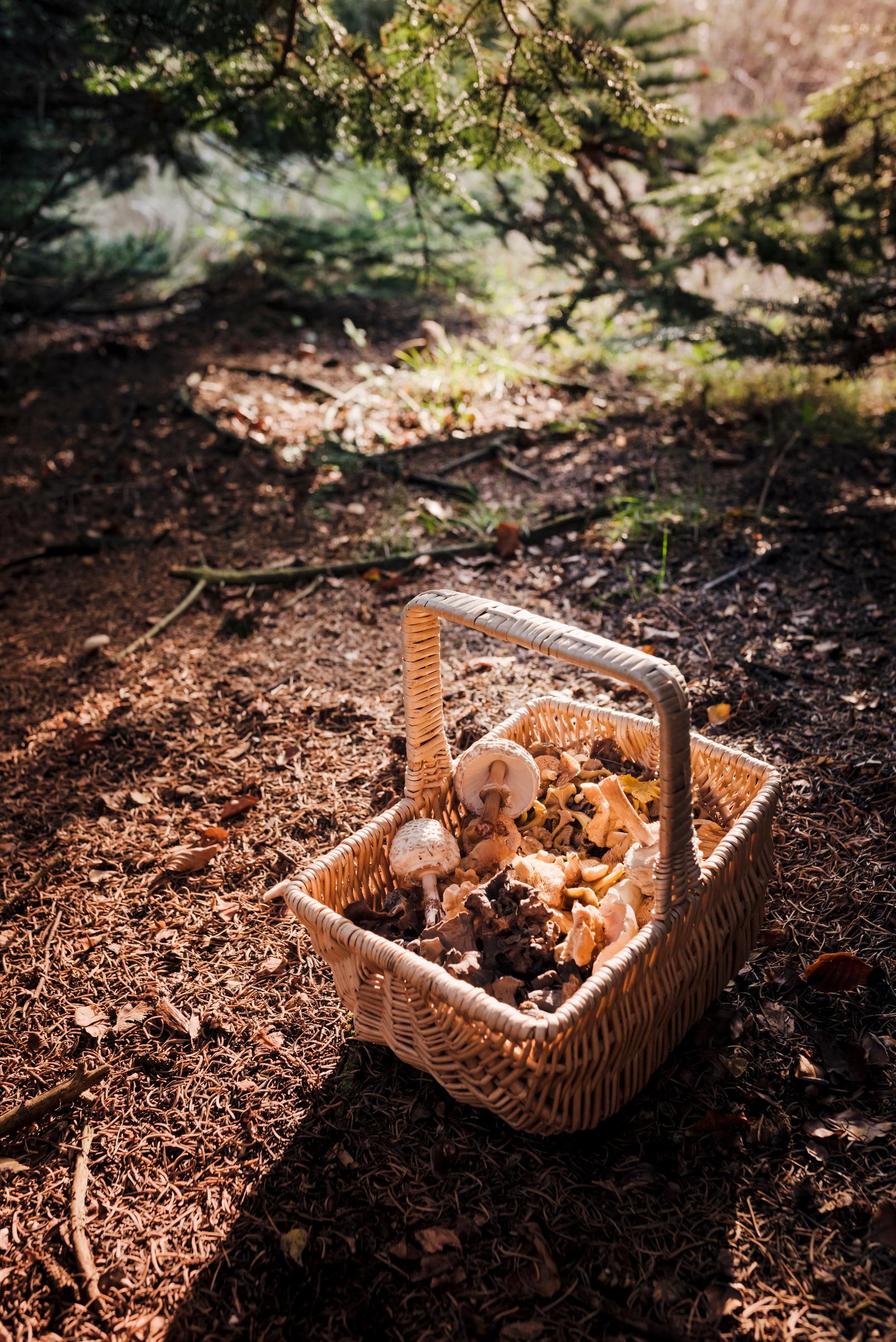
Hints and Tips:
Timing is Key: Mushroom foraging is highly seasonal Research the specific mushroom varieties you ' re after and the best time to find them
Local Wisdom: Connect with local mycology clubs and experts They can provide valuable guidance and ensure your safety, as some wild mushrooms can be toxic N O M A D I C | 2 4

"Wild foods, and interacting with the landscape, has a huge place in our sustainable future"
Respect Nature: Foraging ethics are paramount Only harvest what you can identify with confidence, leaving no trace of your presence in the forest
Using the Ingredients:
Mushrooms from the Pacific Northwest can elevate your culinary creations Chanterelles, with their delicate aroma and fruity notes, pair perfectly with creamy pasta dishes Morels, prized for their earthy and nutty flavor, shine in risottos or sautéed with butter Porcinis add depth to soups and stews, while matsutakes, with their spicy cinnamon scent, are a prized ingredient in Asian cuisine, particularly broths and stir-fries
The Scottish Highlands, Scotland: Wild Harvests Amidst Majestic Scenery
Foraging Paradise: The rugged beauty of the Scottish Highlands harbors a bounty of wild ingredients waiting to be discovered This pristine wilderness is a forager's haven, offering a diverse array of edibles
Types of Forage: The Highlands offer a rich tapestry of foraging opportunities, from heather and brambles to wild garlic and seaweed along the coastal edges But perhaps the most iconic of Scottish forage is the elusive wild haggis (just kidding!) – it's actually the juniper berry These small, fragrant berries grow amidst heather and are a key ingredient in Scotland's beloved gin
Hints and Tips:
Respect Access Rights: Familiarize yourself with Scotland's "Right to Roam" laws, which allow responsible foraging on most land However, private property and protected areas may have restrictions
Seasonal Bounty: Different seasons bring different foraging delights Spring is the time for wild garlic and early berries, while autumn brings a wealth of mushrooms and nuts
Ocean Harvest: Don't forget to explore the rocky shores for edible seaweed It's not only nutritious but also versatile in cooking
Using the Ingredients:
Wild garlic, also known as ramps, adds a mild garlic flavor to salads and pestos Juniper berries are the essence of Scottish gin, but they also elevate game meats and sauces And don't miss the chance to collect heather honey, a delightful product of the Highland's lush heather-covered hills
Tuscany, Italy: Truffle Hunting in the Heart of Culinary
Foraging Paradise: Tuscany, a region famed for its rolling hills, charming villages, and exquisite cuisine, is also a paradise for truffle hunters The fragrant forests here are home to the prized white truffle (tuber magnatum) and the black truffle (tuber melanosporum)
Types of Forage: Truffle hunting is an art form in Tuscany
The white truffle, with its intoxicating aroma, is often found hidden beneath oak, hazel, and chestnut trees Black truffles, while less expensive, are still revered for their earthy and complex flavor They thrive beneath oaks, poplars, and willows
Hints and Tips:
Get a Truffle Dog: Truffle hunting is best done with a trained truffle dog, as they can sniff out the prized fungi hidden beneath the earth
Season of Scents: Truffle hunting season in Tuscany typically spans from late summer to early winter, depending on the type of truffle Autumn is prime time for white truffles
Permission Required: Be mindful of truffle hunting regulations, as some areas may require permits, and others may be privately owned
Using the Ingredients:
Tuscany's truffles are culinary treasures that can transform simple dishes into gourmet delights Shave white truffles over pasta or risotto for an unforgettable experience Black truffles, with their earthy notes, enhance sauces, omelets, and even cheese dishes like fondue The possibilities are as endless as Tuscany's rolling hills
As we ' ve journeyed through the top three foraging paradises around the world, it's clear that the magic of foraging lies not only in the act of discovery but also in the culinary alchemy that transforms wild ingredients into exquisite dishes
Whether you ' re searching for mushrooms in the Pacific Northwest, exploring the Scottish Highlands for juniper berries, or truffle hunting in the heart of Tuscany, the world offers an abundance of treasures waiting to be uncovered. With the right knowledge, respect for nature, and a touch of adventurous spirit, you can embark on your own foraging adventure, connecting with the land and savoring the delectable fruits it offers. So, lace up your hiking boots, grab a basket, and set forth on a foraging journey that's as enriching as it is delicious.

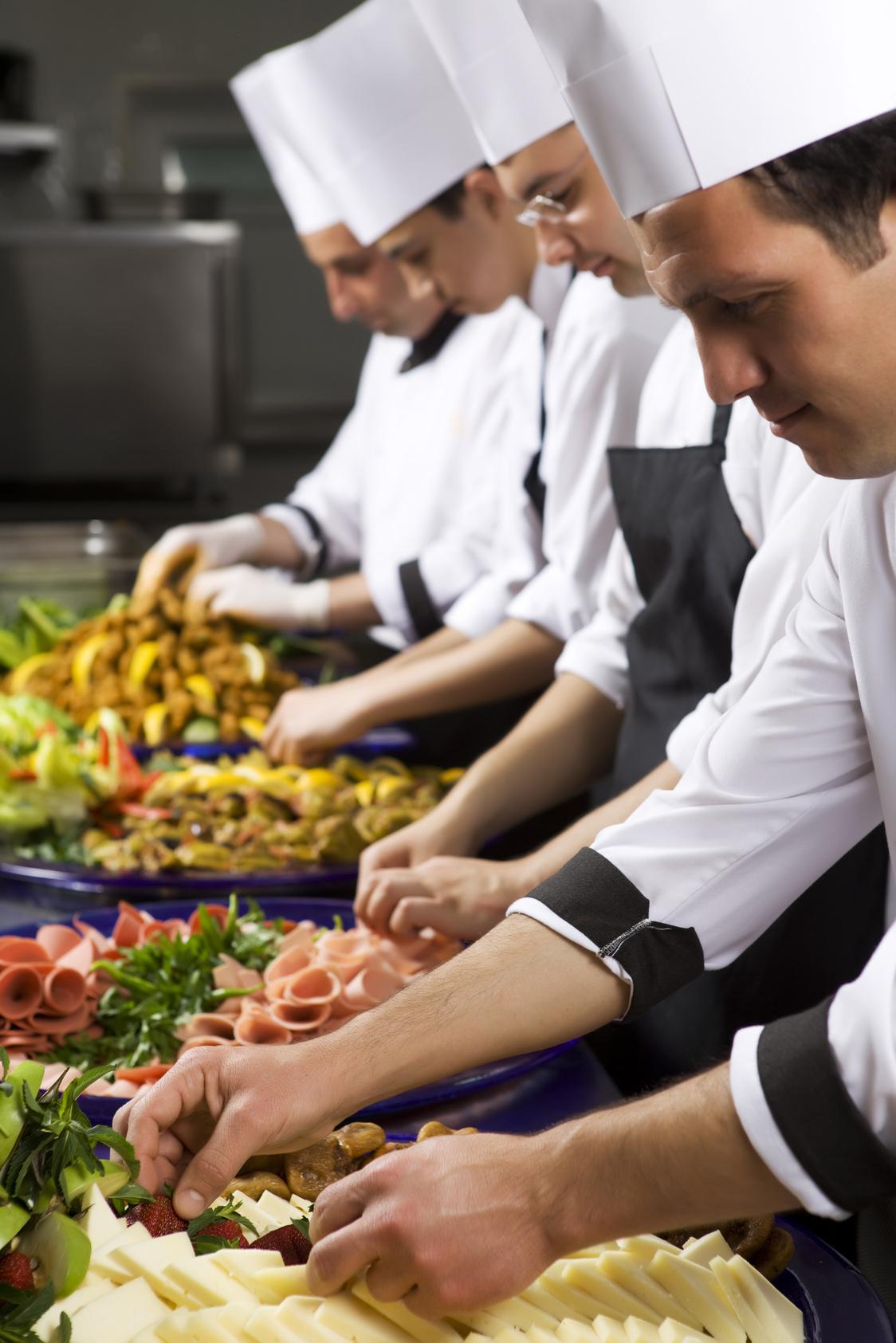
In a world where change is the only constant, the global hospitality industry is no exception As we journey through a post-pandemic era, the landscape of hospitality is experiencing a sea change in trends affecting everything from salary projections to job opportunities and potential risks Let's set sail and explore these currents that shape the world of hospitality today Salary Projections: Riding the Wave of Recovery As the dust of the pandemic settles, salary projections in the hospitality industry are cautiously optimistic According to recent reports, wages in the sector are showing signs of recovery with some regions experiencing significant growth In the United States, for example, the National Restaurant Association reports that the restaurant industry added jobs at a faster rate than the overall economy in 2021, and wage growth outpaced the national average However, it's essential to note that these salary increases are not uniform across the board High-demand positions such as chefs, experienced bartenders, and skilled hotel managers may see more substantial wage growth compared to entry-level roles Additionally, some regions and segments of the industry are rebounding more quickly In a world where change is the only constant, the global hospitality industry is no exception As we journey through a post-pandemic era, the landscape of hospitality is experiencing a sea change in trends affecting everything from salary projections to job opportunities and potential risks Let's set sail and explore these currents that shape the world of hospitality today
Salary Projections: Riding the Wave of Recovery As the dust of the pandemic settles, salary projections in the hospitality industry are cautiously
optimistic According to recent reports, wages in the sector are showing signs of recovery, with some regions experiencing significant growth In the United States, for example, the National Restaurant Association reports that the restaurant industry added jobs at a faster rate than the overall economy in 2021, and wage growth outpaced the national average However, it's essential to note that these salary increases are not uniform across the board Highdemand positions such as chefs, experienced bartenders and skilled hotel managers may see more substantial wage growth compared to entry-level roles
Additionally some regions and segments of the industry are rebounding more quickly than others, depending on local vaccination rates and travel restrictions
Global Job Opportunities: Diverse Horizons
One of the remarkable aspects of the hospitality industry is its global nature, and this diversity remains a prominent trend As travel restrictions ease, international tourism is gradually returning, opening up job opportunities worldwide Emerging Markets: Countries in Asia, particularly China and India, are poised to become significant players in the hospitality industry The rapid growth of their middle-class populations and increasing disposable income make these markets attractive for hotel chains, restaurants, and travel agencies
Sustainability and Ecotourism: As environmental concerns continue to gain traction, eco-friendly and sustainable practices are shaping job opportunities
From eco-resorts in Costa Rica to wildlife conservation projects in Africa, there's a growing demand for professionals who can balance luxury and sustainability Remote Work and the Gig Economy: The rise of remote work is influencing the industry's
staffing model Hospitality businesses are increasingly turning to freelancers and parttime workers for flexibility in meeting fluctuating demand.
Tech Integration: The integration of technology into hospitality operations creates opportunities for tech-savvy professionals Roles related to data analytics, digital marketing, and automation are in high demand
Potential Risks: Navigating Choppy Waters
While the hospitality industry sees rays of hope, there are still potential risks and challenges ahead that need careful navigation
Pandemic Uncertainties: The shadow of the pandemic lingers, and new variants of the virus can disrupt travel plans and operations
Hospitality businesses must remain agile in adapting to changing circumstances Supply
Chain Disruptions: The industry relies on a complex global supply chain for everything from ingredients to linens Disruptions, such as shipping bottlenecks or shortages, can have a domino effect on operations
Labour Shortages: The hospitality sector continues to face labor shortages, exacerbated by factors such as the pandemic, increased job competition, and ongoing visa restrictions These shortages can impact service quality and operational efficiency

Regulatory Changes: Evolving regulations related to health and safety, labor practices, and environmental standards can affect how hospitality businesses operate Adhering to these changes while maintaining profitability is a delicate balancing act
Economic Volatility: The industry is susceptible to economic fluctuations and geopolitical events Currency devaluation, inflation, or political instability in key markets can impact revenue and profitability
Sustainability and Resilience: Anchoring for the Future Amid these challenges and opportunities, sustainability and resilience have emerged as key themes in the hospitality industry Businesses are recognising the importance of minimising their environmental footprint and building resilience against disruptions
Sustainable Practices: Sustainability is no longer a buzzword but a business imperative Hotels and restaurants are implementing energy-saving measures, reducing food waste, and adopting eco-friendly construction materials
Diversification: Many hospitality businesses are diversifying their offerings to adapt to changing market dynamics. For instance, hotels are
incorporating remote workspaces and digital nomad packages to cater to the evolving needs of travelers
Health and Safety: The pandemic has underscored the importance of robust health and safety measures Businesses are investing in rigorous hygiene protocols to instill confidence in travelers
Local Sourcing: Reducing reliance on global supply chains, some businesses are opting for local sourcing of ingredients and products. This not only supports local economies but also enhances resilience
Investment in Training: To combat labour shortages, there's a renewed focus on training and upskilling existing staff Providing opportunities for career growth can help retain talent in a competitive job market
As the hospitality industry sails through uncharted waters, it must remain adaptable and resilient The currents of change are both challenging and promising, with salary projections showing signs of recovery and diverse job opportunities on the horizon However, potential risks, from supply chain disruptions to labor shortages, require vigilant navigation. Sustainability and resilience are the lodestars guiding the industry toward a brighter future By embracing eco-friendly practices, diversifying offerings, and prioritising health and safety, hospitality businesses can secure their place in a changing world In this everevolving industry, those who remain agile, innovative, and committed to delivering exceptional guest experiences will not only weather the storm but thrive in the hospitality horizon of tomorrow
words by J Brown page 16

It is with delight that I can announce the CSF int education pilot program has been launched
Our advisory board member David Mizon has been pro-actively working hard behind the scenes to develop relations with catering colleges in both India and Venezuela
You don’t have to look far to see the incredible talent and experience we have as CSF-int members so we are creating the opportunity to share knowledge and skills with the next generation of aspiring chefs and bakers

As we all know the hospitality industry are in need of skilled and enthusiastic students to secure the future of our industry so here is an opportunity for CSFint members to become mentors as well as deliver inspirational talks and technical demonstrations over the internet to the students Juliana will also be delivering talks covering environmental issues and food waste to help raise greater awareness of the global challenges we all face
By way of developing this to our mutual benefit, the students themselves become CSF-int members , develop and implementing fund raising activities for the CSF-int charity, funds that will be used to support artisan food producers who lose livelihoods due to natural disasters
CSFint need all the support possible to try to retain farmers, beekeepers, cheesemakers, bakers, shepherds, the list goes on!
We aim to support them put food on their own families tables , retain culinary heritage , cultural gastronomy and traditional skills
By working together we can achieve a win-win situation and opportunity that can benefit all
We look forward to sharing more news and images of the progression and developments in future magazines to come For now it is a pleasure to introduce you to the Food Consulate in India and its baking academy
IT IS A PLEASURE TO INTRODUCE YOU TO THE FOOD CONSULATE IN INDIA AND ITS BAKING ACADEMY

Food Consulate was built in 2015 to offer learning and teaching experiences in culinary to the discerning learners who were looking for an international academy offering professional programs. Subsequently, Food Consulate became an Authorised Center for City & Guilds UK to deliver Diploma Program in Baking & Patisserie and has graduated many aspiring Chefs over the past 8 years of operations. We are an affiliated training partner of Tourism & Hospitality Skill Councilsupported by the Ministry of Skill Development and Entrepreneurship & Ministry of Tourism, Government of India. The World Association for Chefs Society has recognised the qualitative program we have been offering and made us a recognised school
Besides graduating many chefs in our Internationally recognised Diploma Program we also have helped many Entrepreneurs and F&B professionals to develop their
Entrepreneurs and F&B professionals to develop their technical and business skill in Baking and Pastry by offering programs with relevant international curriculum in a state-of-the-art kitchen along with Chef Instructors with international exposure in our other short-term programs We work closely with the Chefs, Entrepreneurs and Industry professionals in supporting the industry and trade by creating more awareness of the opportunity in this trade and training more skilled professionals We hold the Guinness record for making the world’s tallest cupcaketower amongst many such activities to promote the stream actively.
We strive to keep upgrading ourselves and our offering to the discerning learners and in putting India as one of the most sought out destination for learning Bakery Science and Pastry Arts



When it comes to wine, Spain is a treasure trove of history, diversity, and flavor From the sun-soaked vineyards of Rioja to the coastal wineries of Catalonia, Spain's wine regions have forged their mark in the global wine-making industry In this journey, we'll explore some of the most renowned Spanish vineyards and the exceptional varieties that have captivated the palates of wine enthusiasts worldwide

Nestled in the north of Spain, La Rioja is perhaps the country's most iconic wine region With a history spanning centuries, this region produces some of Spain's most celebrated wines When you visit, be sure to explore: Bodegas Marqués de Riscal: This historic vineyard, founded in 1858, is an architectural masterpiece with its avant-garde design by Frank Gehry Marqués de Riscal offers a tour through its modern facilities and a taste of their iconic Rioja Reserva
Just a stone's throw from Barcelona, Penedès is Catalonia's wine country This region is famed not only for its still wines but also for its sparkling treasures
Discover:
Freixenet: Known for its exquisite cavas (Spanish sparkling wine), Freixenet is a must-visit A tour here includes a journey into the heart of the cava-making process and a tasting of their renowned sparkling wines
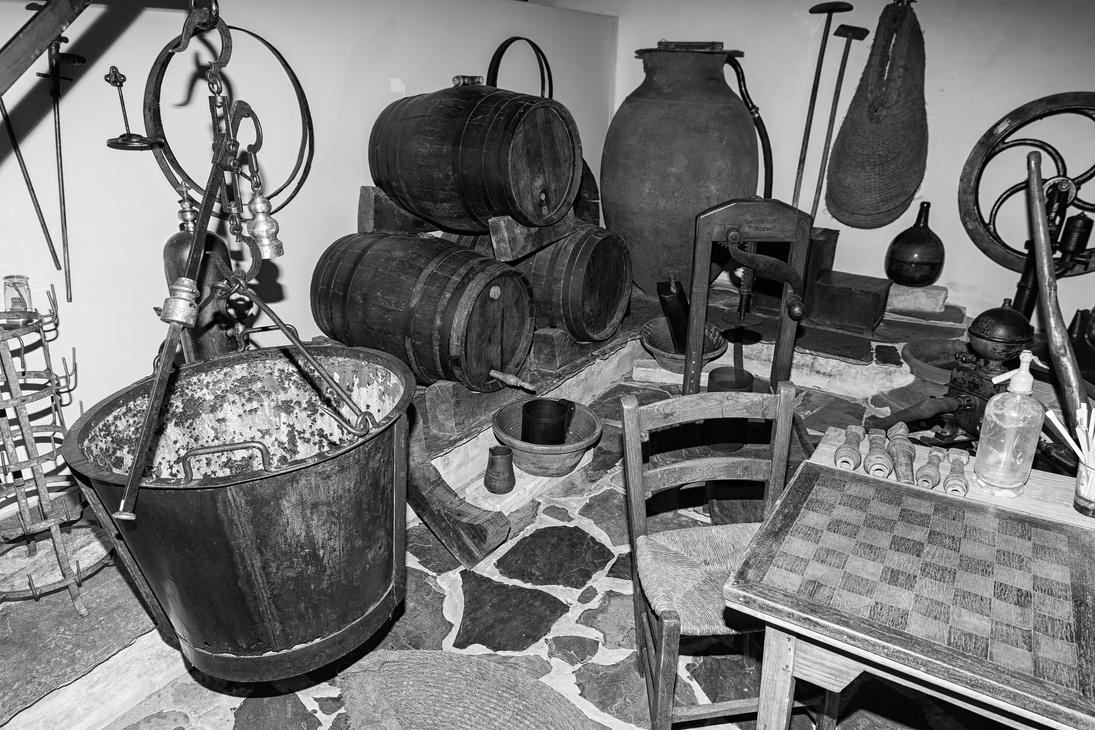
Varieties to Try: Penedès specializes in Cava, which is made using traditional methods, similar to Champagne
The most commonly used grapes are Macabeo, Xarel lo, and Parellada

Situated in the heart of Castilla y León, Ribera del Duero is synonymous with robust red wines The vineyards in this region are not just a testament to the winemaking tradition but also to the enduring bond between vines and a landscape that can be harsh yet breathtakingly beautiful Don't miss:
Bodegas Vega Sicilia: Often considered Spain's most prestigious winery, Vega Sicilia crafts iconic wines such as Único and Valbuena A visit here offers an intimate look at their meticulous winemaking process
Varieties to Try: Tempranillo reigns supreme in Ribera del Duero, producing intense, fullbodied red wines with deep flavors and aging potential
Priorat: A Story of Resurgence
Tucked away in Catalonia, Priorat is a region with a fascinating history of revival Once nearly abandoned, it's now recognized for its world-class wines
Explore:
Clos Mogador: Renowned winemaker René Barbiers Clos Mogador is a testament to the region's resurgence A tour here provides insights into organic viticulture and a tasting of their highly-praised wines
Varieties to Try: The star grape of Priorat is Garnacha (Grenache), often blended with Carignan and other varietals These wines are bold, with ripe fruit flavors and a distinctive mineral character
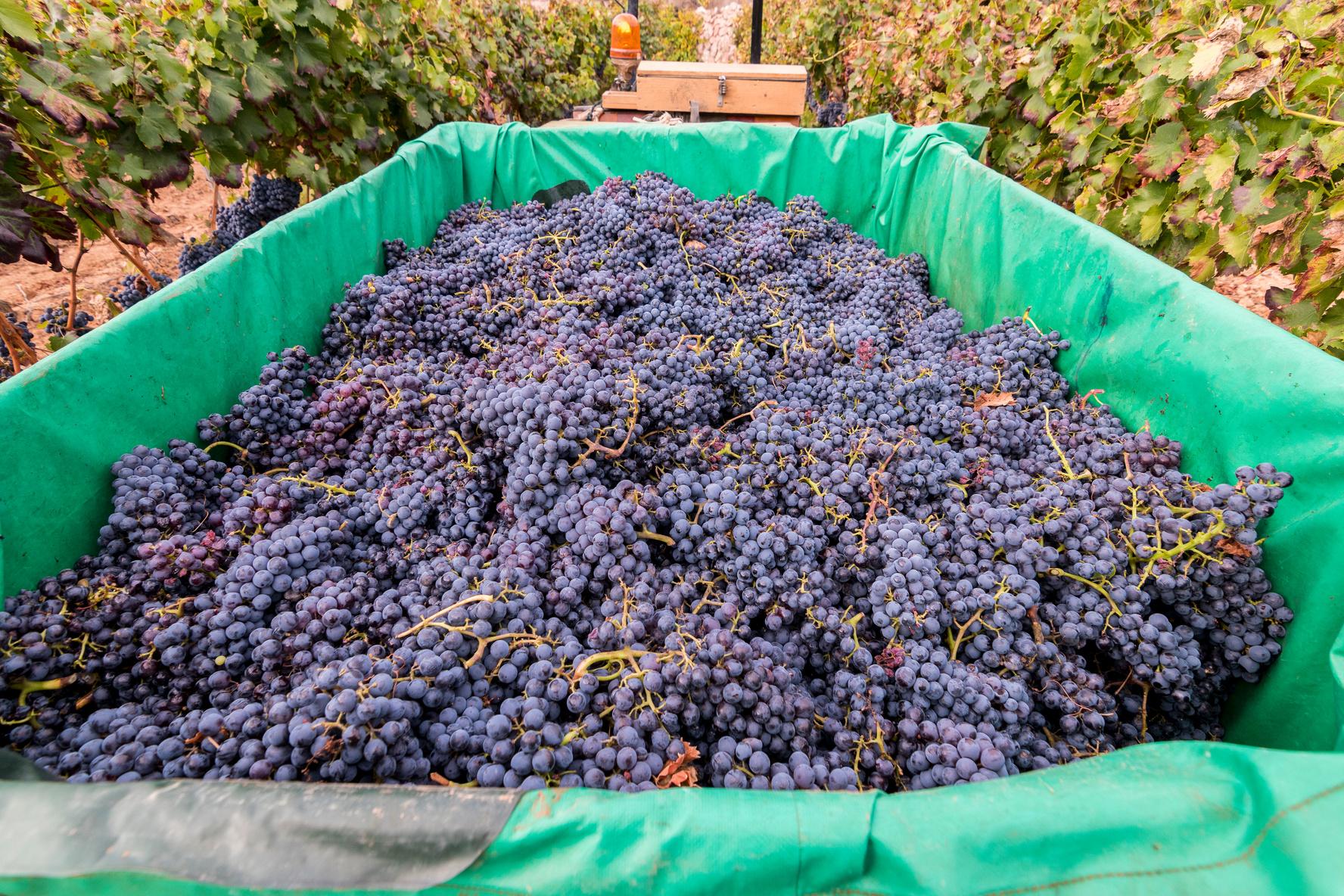
Sherry Country: Jerez
In the southwestern corner of Spain, Jerez de la Frontera is the home of Sherry wine This fortified wine has a long history and unique production process
Discover:
Bodegas Tio Pepe: A visit to Tio Pepe offers an immersion into the world of Sherry Witness the traditional solera aging process and savor a range of Sherries, from crisp Fino to rich Oloroso
Varieties to Try:
Sherry offers a variety of styles, from the dry and pale Fino to the rich and sweet Pedro Ximénez Each has its own unique flavor profile
Rías Baixas: Albariño's Abode
On the lush, green coast of Galicia lies Rías Baixas, a region known for its crisp and aromatic white wines, primarily made from the Albariño grape
Explore:
Bodegas Martin Codax: This winery not only produces excellent Albariño wines but also offers panoramic views of the region's idyllic landscapes A visit here includes a tasting of their signature wines
Varieties to Try: Albariño is the star here, known for its zesty acidity, citrusy notes, and hints of white flowers It's a perfect pairing for seafood
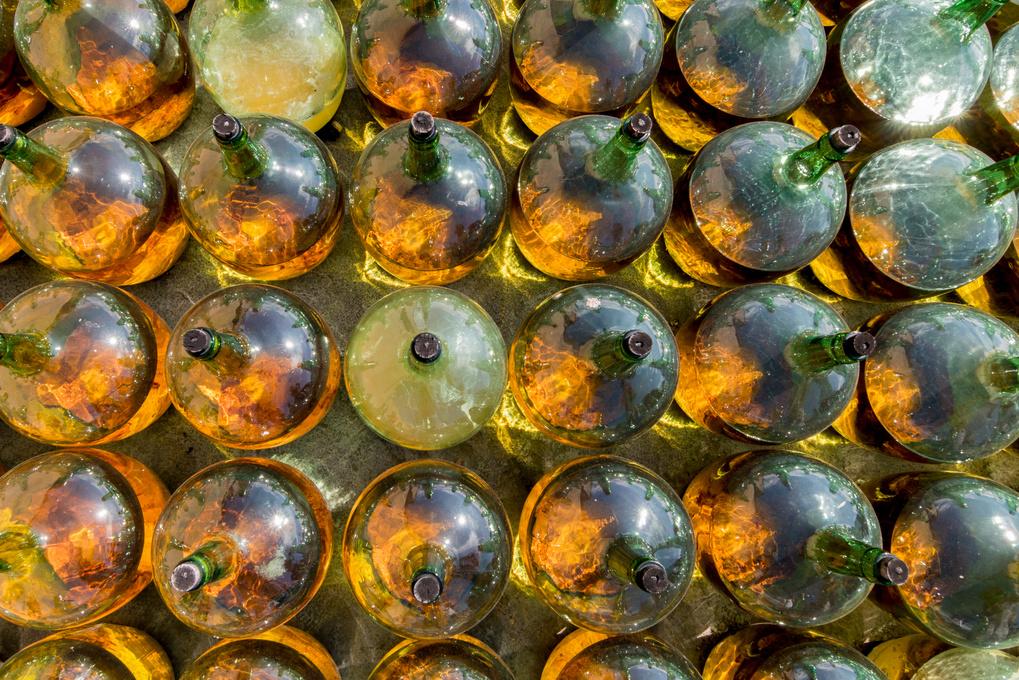
Montsant: A Hidden Gem
Nestled around the famous Priorat region, Montsant often flies under the radar but offers fantastic wines at a more accessible price point
Visit:
Celler de Capçanes: This cooperative winery produces remarkable wines, including Garnachabased reds and kosher wines A tour here provides insights into Montsant's unique terroir Varieties to Try: Montsant's red wines are typically Garnacha-based, resulting in bold, fruit-forward wines with a touch of spice and minerality
Bierzo: Mencía Magic
In the green hills of northwestern Spain, Bierzo is an emerging star known for its Mencía grape
Explore:
Descendientes de J Palacios: This winery crafts exceptional Mencía wines, including the iconic Pétalos A visit offers a glimpse into their biodynamic winemaking practices page 24
Varieties to Try:
Mencía wines from Bierzo are medium-bodied, with bright red fruit flavors and floral notes, making them approachable yet complex
Spain's wine regions are a treasure trove for wine enthusiasts From the elegant reds of La Rioja to the sparkling cavas of Penedès and the robust Garnachas of Priorat, there's a wine for every palate Plan your visit to coincide with the grape harvest (usually in September or October) for a unique and immersive experience Whether youre a seasoned wine connoisseur or a budding enthusiast, Spains vine
Local Expertise: Seek advice from local experts, whether it's a winemaker, sommelier, or knowledgeable local They can provide insights and recommendations that enhance your wine-tasting experience
Wine Tours: Many vineyards offer guided tours that delve into their winemaking processes Take advantage of these tours to learn more about the wines you're tasting
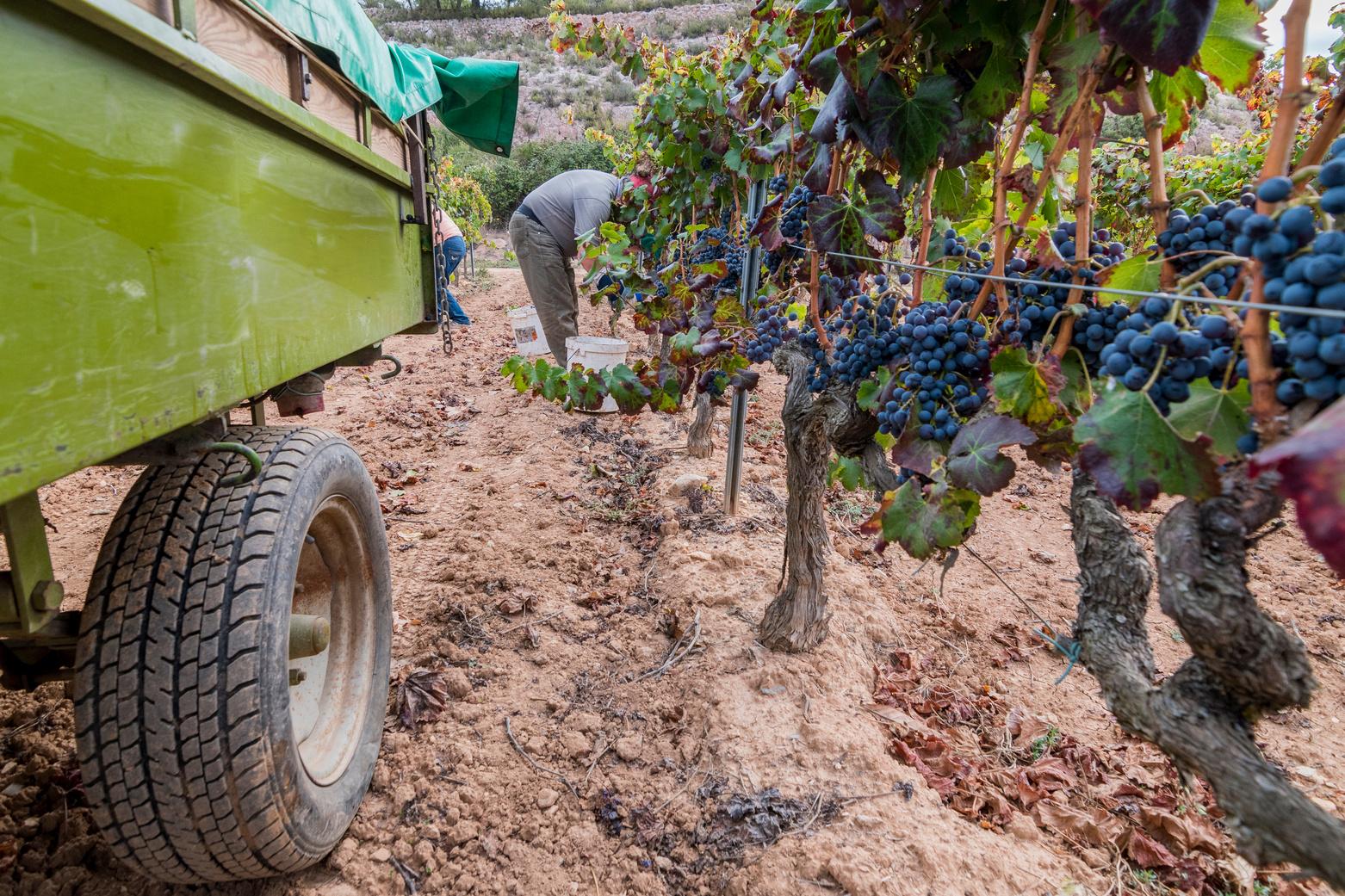
Designated Driver or Transportation: If you plan to visit multiple wineries in a day, arrange for a designated driver or use a local wine tour company to ensure safe transportation
Food Pairings: Spanish wines are incredibly foodfriendly Pair local cheeses, cured meats, and tapas with your wine tastings for a complete culinary experience
Although there are some essential features that identify and define it beyond its recipes, Spanish gastronomy is an amalgam, a melting pot of cuisines with a markedly distinctive character; born and shaped by its geography, resources, history, and the particular customs and tastes of its inhabitants
Thus, in the north we find a fishing and mountain cuisine, where the fruit of the Cantabrian Sea is treated without artifice and where bovine meats give account of the freshness and lushness of the meadows they graze
On the main land’s interior we find on the one hand a farm cookery, built around the water resources that settlements along riverbanks provide; another more robust tableland cooking style, where the pigwhich is said to be used up to its gaitreigns supreme without detriment to game meats and pulses; and finally a shepherdstyled cuisine, where in every preparation and bite you can still taste and feel the imprint of the transhumance routes of old
In the south, Mediterranean cooking, also typical of the Balearic and Levantine peninsular coasts

And in the African Atlantic there is the cuisine of the Canary Islands, of mestizo and humble heritage
If Julio Iglesias once famously said that the country smelled of garlic, in an interview to the media upon his return to Spain, the truth is that for the visitor who intends to delve into the roots of its gastronomic offerings, far more pleasant surprises await For even though the common denominator of these traditional cuisines is the exaltation of the product, treated in a plain and honest way with rather simple seasonings, fortunately it is still possible to
Long revered and highly praised the world over for its richness and inexhaustible
Spain's culinary journey is a captivating tapestry of history and flavor Dating back to Roman times, Spain's gastronomic heritage is a blend of diverse cultures The Moors introduced exotic spices, while the Reconquista brought a fusion of Christian and Muslim traditions Columbus' voyages ushered in the era of New World ingredients like tomatoes and potatoes
Spain's iconic dishes emerged: paella from

Valencia, tapas born in Andalusia, and churros dipped in rich chocolate The Spanish Armada introduced spices from the East, influencing dishes like the beloved gazpacho
Today, Spain's cuisine is a vibrant reflection of its past, with regional specialties celebrated worldwide, inviting all to savor a taste of its rich history.
It brings together Punic, Greco-Roman, Judaic, Arab and Berber heritages.



variety, Spanish gastronomy is a true reflection of its people, as it is eminently plural and diverse.
find other aromas along the way such as saffron (the red gold of La Mancha), bay leaf, paprika (to the cultivation of which the region of La Vera is devoted), thyme, rosemary, marjoram, parsley, oregano, cloves, sesame, fennel, anise, cumin, cinnamon and coriander
Other factors that unite all these cuisines under the same sign are the preeminence of olive oil (of which the country is a world leader in production and exports), the use of lard and the early adoption of New World ingredients such as tomato, bell pepper or potato (the latter of documented use in stews and omelets among the popular classes long before Antoine Parmentier got to make his mashed potatoes famous in Europe)
And speaking of potatoes and Gaulish chefs, in La Rioja they still remember Paul Bocuse's visit to a famous winery where he was asked to cook at the banquet in celebration of its centenary Before the banquet began, potatoes Rioja style were offered as a quick fix for the service staff Well, not only did they thrill the father of nouvelle cuisine (apparently he ate three rounds), but he assured those present that it was the tastiest recipe he had ever had in his life "You are nothing but fools!" - he said - "This dish is much better than any of the ones I am going to serve you in a while " For those of you not in the know, it is a rather elementary stew with few ingredients, incredibly easy to make "A dish like this should represent your country in the whole world," he exclaimed And he may well have been right
For indeed, despite all its due glory, in Spain there is much life beyond tapas and paella


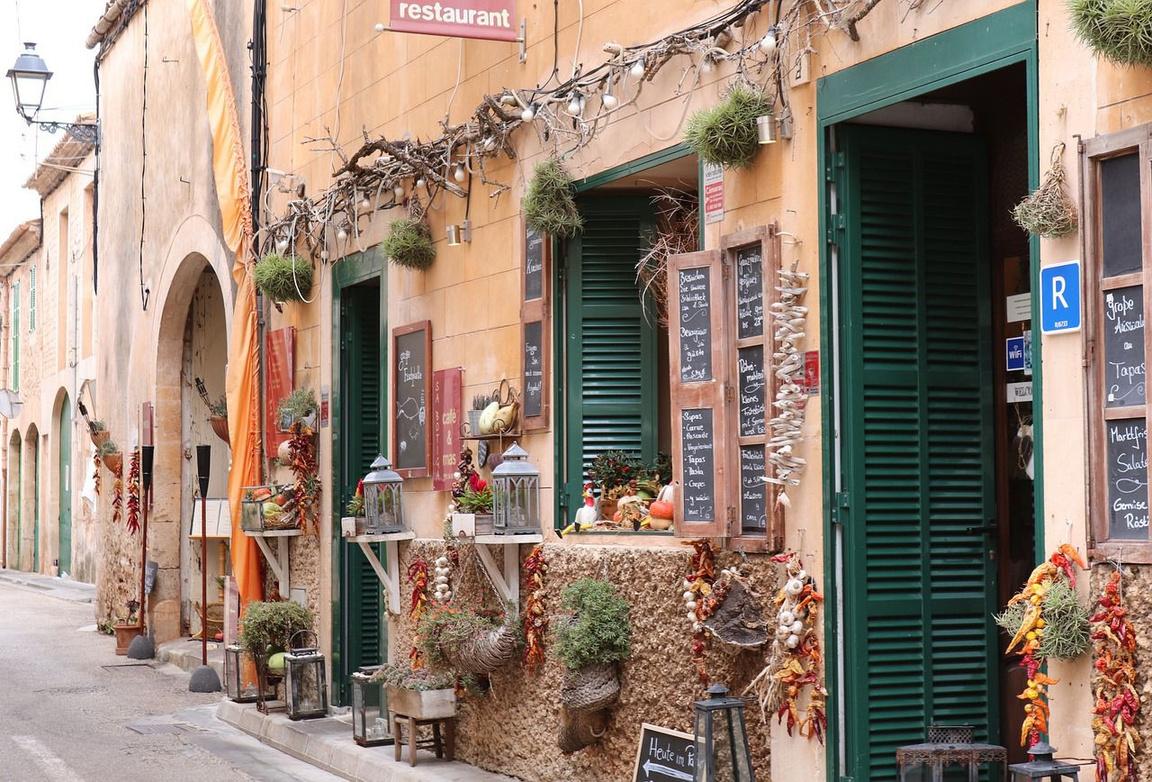
Potajes, potes, pucheros, marmitas, peroles, cocidos, greixoneres and escudelles - descendants of the medieval Sephardic adafina (from the Arabic dafinah; buried, hidden) – are precious treasures that make many long for the arrival of winter And it is precisely there, as the best cook of the 20th century would discover with a potato stew, that Iberian gastronomy reveals its greatest secret: making much with very little Now that we have let you in on it, do yourself a favor: take a map, get a good spoon and start digging Your palate will thank you in heaps


FROM RICH FISHERMAN'S FOOD TO GASTRONOMIC DELICATESSEN.
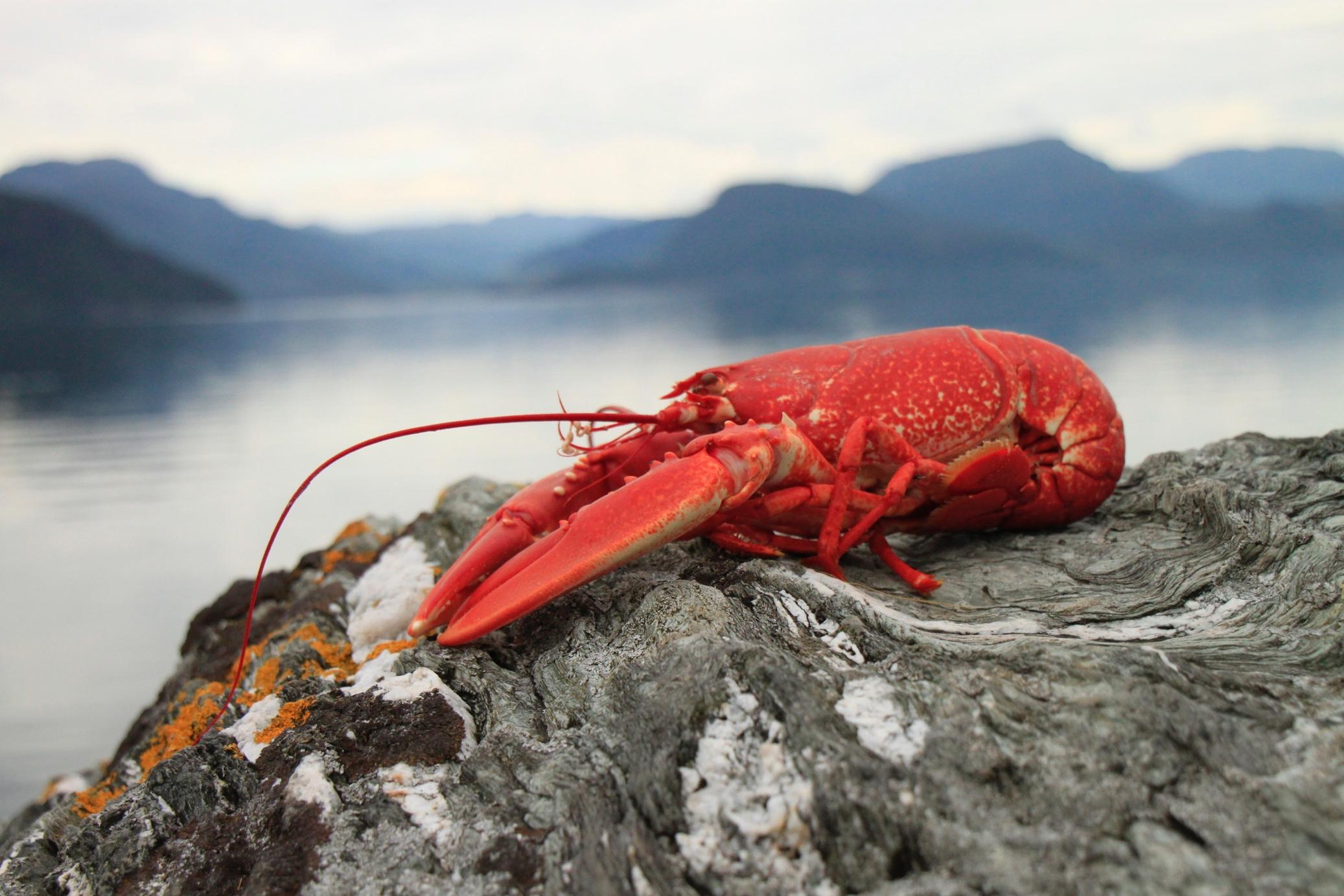 words by Chef Koldo Royo
words by Chef Koldo Royo
If you have heard of the controversial author Christopher Hitchens you may know that in his list of the four most overrated things in life he included lobster What seems certain (judging by the severity of his assertion) is that he must have been referring to the species Homarus Americanus, because otherwise the thing makes little sense To the astonishment of many, the English word lobster is an umbrella term that includes decadopods of different genera that gives rise to many confusions
In Spain, however - and leaving taxonomic considerations aside - it is totally unthinkable to put the Canadian lobster in the same bag as the protagonist of our article, the Palinurus Elephas, since they do not have the same gastronomic value nor do they command the same prices If the former is so abundant on the coasts of the state of Maine to the extent of having been included in the menu of all McDonald's in New England at one time (see their seasonal lobster roll), the latter has its habitat in the western Mediterranean and part of the European Atlantic coast

Of its culinary tradition we have the account of Pliny the Elder, who informs us of their value to the Romans, who in order to keep them alive once captured deposited them in ponds
The silhouette of this crustacean with long antennae was already immortalized in a famous mosaic of a triclinium (domestic hall of the wealthy Roman classes, dedicated exclusively to the celebration of banquets) located in Pompeii As the gastronome Apicius tells us in the first century AD, lobster (again, let us stress Palinurus Elephas) was already a common ingredient in meals of pomp and pageantry It was prepared cooked or grilled, usually accompanied with sauces made from garum, defrutum and various spices You can see, then, how in ancient times its consumption was associated with the most sumptuous luxury despite the fact that they were not in scarcity (in the Helad we have the testimony of Aristotle, who tells us that they populated the coast in such numbers that it was possible to pick them up directly by hand)
A long time has passed since then and its presence in the seas has been diminishing
Because while it is true that for centuries it was relegated to the most absolute culinary obscurantism, being exclusively subsistence food among fishermen (as was the case of sturgeon caviar in ancient Persia), the truth is that the lobster (good ol’ Palinurus, don’t forget) saw its prestige renewed in the nineteenth century thanks to the revaluation made of it by the French haute cuisine (thank you, Francatelli!)
Thus it is, thanks to its growing demand on the tables of the continental aristocracy, how fishermen from the island of Menorca got to experience the awakening of a flourishing trade with the establishment of new routes, mainly to the port of Marseilles
With an intense flavor and delicate texture, the catches from the north coast of Menorca were (and still are) highly coveted And although its presence in Menorcan recipes is short-lived, it must be said that today it is undoubtedly one of its star products
A good example of this is its famous caldereta, the favorite dish of Juan Carlos de Borbón, formerly only known by the locals amongst fishermen This was usually made with pieces of fish and lobsters that were battered and could not be sold on the market Prepared in situ in the crossing or in the fishing grounds, it was made in a cauldronwhence its name comes - with a base of sofrito and enriched with a good majado and rice, potatoes or bread (when it had become too hard to use otherwise)
And from eating it in the boat, Menorcans began to offer it in their restaurants with the rise of tourism in the middle of the last century Because although Marco Pierre White pointed out that cooking is philosophy, it should not be overlooked that it is economy as well And if yours allows it, you should not fail to try such a delicacy Even if it is just once in your life Because you are not going to trust the word of a character like Hitchens, are you? Off you go What are you waiting for?
2 lobsters of 1 k
1 k tomato
1 onion
1 green bell pepper
1 bay leaf
1 k of ripe tomatoes
1 dl brandy
salt 2 l of water
2 cloves of garlic
2 sprigs of parsley olive oil
Peel and chop the tomato without seeds Set aside
by Chef Koldo Royo
Chop the lobster separating the body from the head Empty the lobster, reserving all but the tripe, which is thrown away
In a casserole with a little oil, sauté the onion and the bell pepper, all finely chopped When it takes color, add the head and legs of the lobster, the bay leaf and the tomato Season
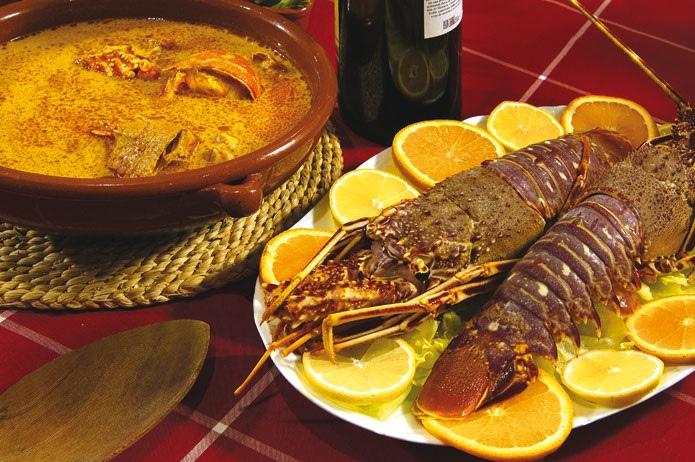
Flambé with the brandy and let it cook for 15 minutes
Add the water and let it cook slowly for another hour
Prepare a mince with a pinch of salt, the garlic, the parsley, the liver and the coral of the lobster and add oil to mount it as if it were a mayonnaise
Mix with the broth and cook for a few minutes Strain the broth, squeezing it well and reserve the head
Cut the lobster body in medallions and put it in the broth, letting it cook slowly, taking special care not to overcook it
Serve with some toasted bread and, if desired, serve the chopped head in the broth
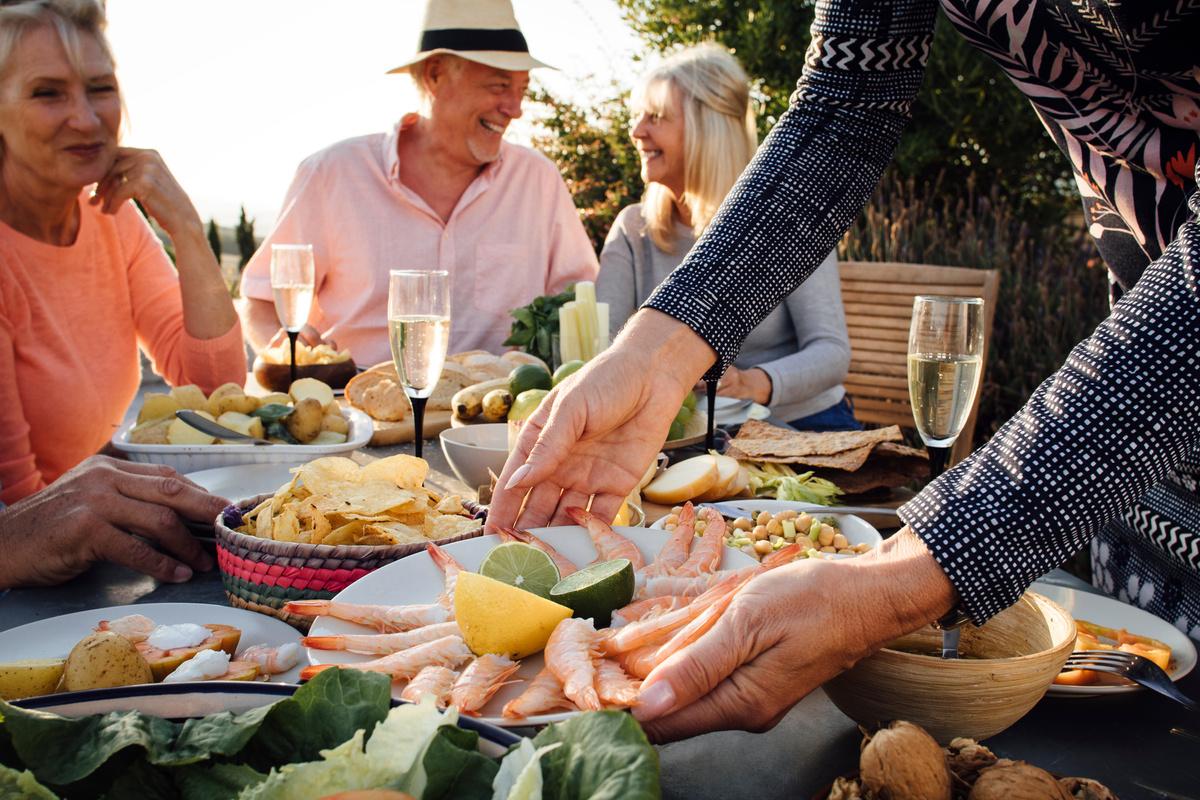
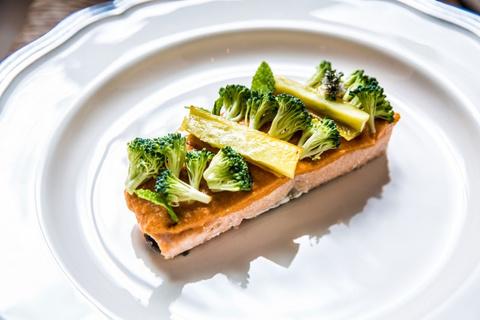




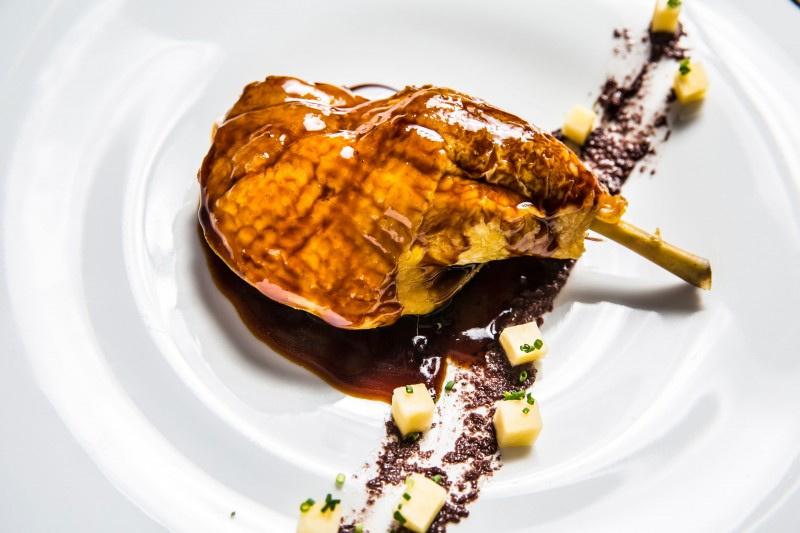
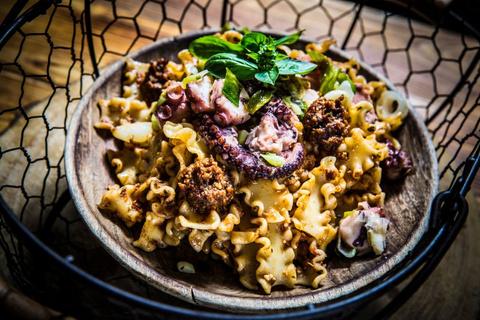


One of Spain's greatest assets is the Mediterranean diet

Declared by UNESCO as Intangible Cultural Heritage of Humanity since 2010, the Mediterranean diet is based mainly on the abundant consumption of fruits, vegetables, legumes and cereals (bread, pasta and rice, preferably wholemeal), fish, lots of olive oil and little meat.
In addition to being healthy, fun and varied, it is one of the diets most recommended by specialists since, according to numerous studies, it is one of the best diets for reducing the risk of cancer, protecting against cardiovascular disease and preventing cellular aging
And not only that, the Mediterranean diet is also a great ally in the recovery process in cancer treatments, providing the patient and their environment with healthy habits that help to better cope with procedures or surgical interventions as is related to a better prognosis Due to the effects of the disease itself and cancer treatments, symptoms such as fatigue, lack of appetite, pain, nausea, etc often appear, making it difficult to eat properly
Aware of the problem and wanting to contribute their bit to the cause, from the Balearic Islands, the Association of Cooks Based in the Balearic Islands (ASCAIB), has collaborated in the Nutritional Guide for cancer patients and their recipes A book prepared by the Provincial Board of the Balearic Islands of the Spanish Association Against Cancer and the Official College of Dietitians - Nutritionists of the Balearic Islands (CODNIB)
As the president of ASCAIB, Koldo Royo, says in the introduction "This book is born with the intention of being a messenger of life and light ( ) with which we want to spread the tasty message that cooking can help our bodies and minds to restore the desired lost balance". Thanks to its vice-president, Luis Aznar, who is also ambassador in Spain for Chefs without Borders, we leave you some of the recipes in this guide, to whet your appetite And if you want to know more, we recommend you to always have it at hand, because prevention is also a cure
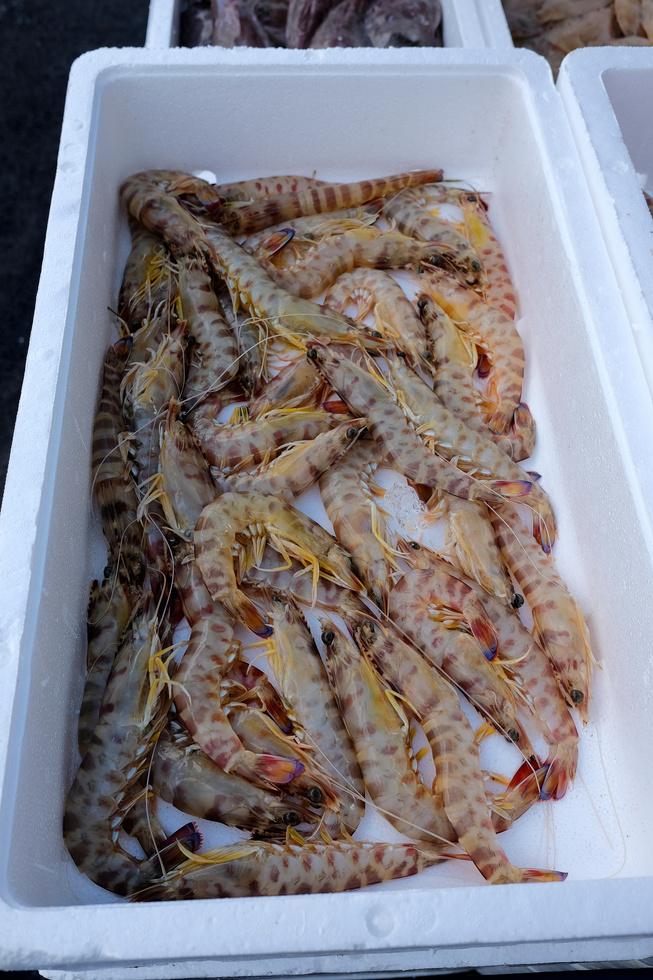
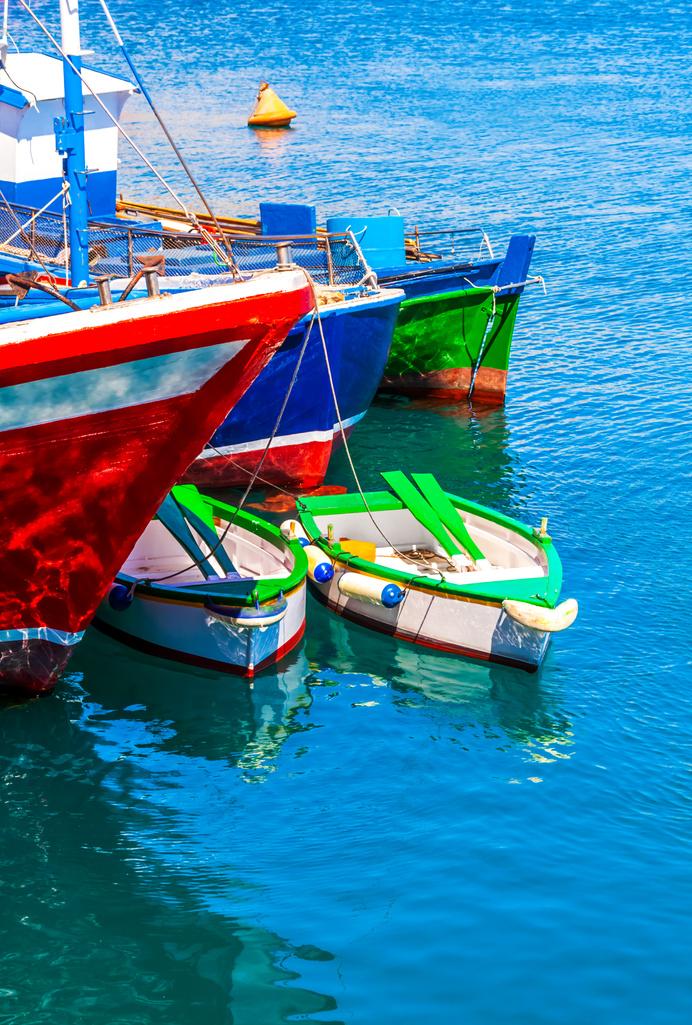

Fresh, tasty and full of color, chef Olivia Caballero from Segovia leaves us this recipe suitable for lack of appetite and weight loss.
Ingredients
400 g pasta
4 octopus legs
6 spring onions
40 g pine nuts
4 tablespoons of olive oil
salt and pepper
for the pesto
100 g pine nuts
80 g sun-dried tomatoes
200 g extra virgin olive oil
1 garlic clove
3 tablespoons of
grated parmesan
15 leaves of fresh basil
1 small cayenne
1 tablespoon lemon juice
salt
basil leaves (decoration)
Preparation
Cook the octopus in plenty of water until tender
Cut the octopus tentacles in slices, set aside
Cook the pasta with abundant water and salt
Drain and rinse with water to stop cooking
Mix with 1 teaspoon oil and set aside
Clean and cut the spring onion into slices
Sauté with 3 tablespoons of oil
Add the octopus and the 40 g of pine nuts, sauté and season with salt and pepper
Hydrate the dried tomato in water
Grind in a food processor with the rest of the pesto ingredients, set aside
Plating
Dress the pasta with the pesto Serve the pasta with the octopus on top, garnish with basil leaves
Ingredients
480 g boneless salmon
150 g sweet potato
1 onion
2 roasted red peppers
80 g bread crumbs
2 cloves garlic
1 ripe tomato
150 g broccoli salt and pepper
Preparation
Preheat the oven to 180 ºC
Clean, flake the salmon and cut into 4 portions
Peel and slice the sweet potato Place on a tray, add the chopped garlic
Wash and slice the onion, tomato and part of the broccoli Place on top of the sweet potato
Arrange the salmon on top of the vegetables Season with salt and pepper

Put the roasted bell pepper in a blender and grind it together with the breadcrumbs
Add on top of the salmon
Plating
Arrange some broccoli florets and two pieces of sweet potato on top of the bell pepper gratin
Bake at 180 ºC for 20 minutes and serve
Note: To avoid the risk of anisakis intoxication the salmon must have been previously frozen for a minimum of 5 days at -20 ºC
This recipe from chef Marta Rosselló, besides being delicious, is appropriate in case of xerostomia, the difficulty of chewing. page 33


by chef Luis Aznar and is appropriate in cases of constipation, difficulty chewing, anorexia, xesortomia Crush in case of dysphagia. It contains fish and can be used as a one course full meal.
600 g cod loin
-For the chickpeas:
400 g dried chickpeas
1 l broth
2 carrots
2 leeks
1 stick of celery
1 tomato
salt and paprika
olive oil
-For the sofrito:
1 onion
1/2 red bell pepper
1 clove of garlic
200 g crushed tomato
olive oil
salt and pepper
200gr cod tripe or cod tripe
100 g cod trimmings
1 l cod stock

parsley
saffron
bay leaf
sprig of thyme
-For the spinach:
2 bunches of spinach
1 clove of garlic
olive oil
sprouts (optional)
For the chickpeas: Soak the chickpeas the night before Peel and clean the vegetables from the chickpeas
Place all the ingredients in a pot Cook until the chickpeas are tender Remove the chickpeas and set aside
For the spinach: Clean and drain the spinach leaves Sauté the spinach with olive oil and crushed garlic
For the cod: Steam the cod loins
For the sofrito: Desalt the cod guts the night before and change the water several times, drain
Peel and finely chop the garlic and onion Clean and finely chop the red bell pepper
Sauté the onion and the chopped garlic with a little oil Add the bell pepper and sauté Add the crushed tomato and cook until the water evaporates
Add the bay leaf, thyme, chickpeas, cod tripe and trimmings, broth, garlic, parsley and saffron threads
Cook until the stew texture is obtained
Place the chickpea stew at the bottom of the dish, top with the sautéed spinach, place the cooked cod loins on top and decorate with some sprouts
by chef Tomeu Caldentey, appropriate in case of: xerostomia, mild mucositis, lack of appetite, altered taste or smell
Ingredients
4 guinea fowl thighs (or failing that, free-range chicken or poussins)
8 apricots of Porreres
2 tablespoons of paste of black olives
4 tablespoons of olives olives
¾ l meat juice or Spanish sauce
1 tbsp butter
1 tbsp olive oil
1 tbsp Sugar
Preparation
For the sauce:
Peel the apricots and set aside once peeled
Sauté the apricot skins with a little butter and olive oil
Add the assortment of olives to the sautéed apricot skins
Add the meat juice to the sautéed apricot skins and the olives once they have caramelized
Allow to reduce over a low heat until the sauce becomes fullbodied
Strain the resulting sauce and set aside
For the apricots:
Sauté in a frying pan with butter and sugar until golden brown and with a nice color
Set aside near the fire, making sure they do not caramelize too much
For the guinea fowl:
Confit the thighs in abundant oil at a low temperature, but do not let the oil gush
Allow to cool in the same oil
Arrange the confit guinea fowl thighs on a baking tray baking tray
It is important that they are at room temperature

Coat the confit guinea fowl thighs with a little of the olive and apricot sauce

Place in a hot oven at 200 ºC for 10 minutes
Remove from the oven once the thighs are lacquered and set aside
Assembly and presentation
Heat the olive sauce over moderate heat and season with salt and sugar
Brush the base of the plates with the black olive paste
Place the apricots on the plates on top of the olive paste
Next to the apricots, place the hot, lacquered guinea fowl legs
Finish the dish with the olive and apricot sauce
With expansive views across arid savannah grasslands, Loapi Tented Camp's safari homes are sited into the contours of the ancient Korannaberg mountains and can accommodate two or four guests



The micro-camps are at least 50 metres apart to ensure privacy and solitude and each home comes with a private team that includes a homathi (butler) and chef, a private vehicle, and the undivided attention of an experienced guide and tracker

In the local language, Setswana, Loapi means the space below the clouds’, and the design philosophy was that the new camp needed to be as low impact as possible
The modular design, combining canvas, steel and glass, was largely manufactured off-site to minimize the environmental impact and protect the iconic shepherd’s trees
The camp features minimal-impact, eco-friendly design solutions, including the latest in solar power and water recycling technology, energy-efficient air conditioning, and solar-powered pool pumps
Inspired by the nomadic spirit of camping, the tented homes offer complete freedom to explore the reserve ’ s vastness and diversity and where guests can choose to spend all day tracking Kalahari keystone species, like the desert black rhino or brown hyena, visit nearby pans where resident black-maned lion prides converge, or take a trip to the top of Bushman Hill where Hartmann’s mountain zebra and greater kudu are often spotted
The aim is to create greater sustainability with equal emphasis on conservation, community, culture, and naturebased tourism
For more information visit · www tswalu com/our-camps/loapi/ and www tswalu com


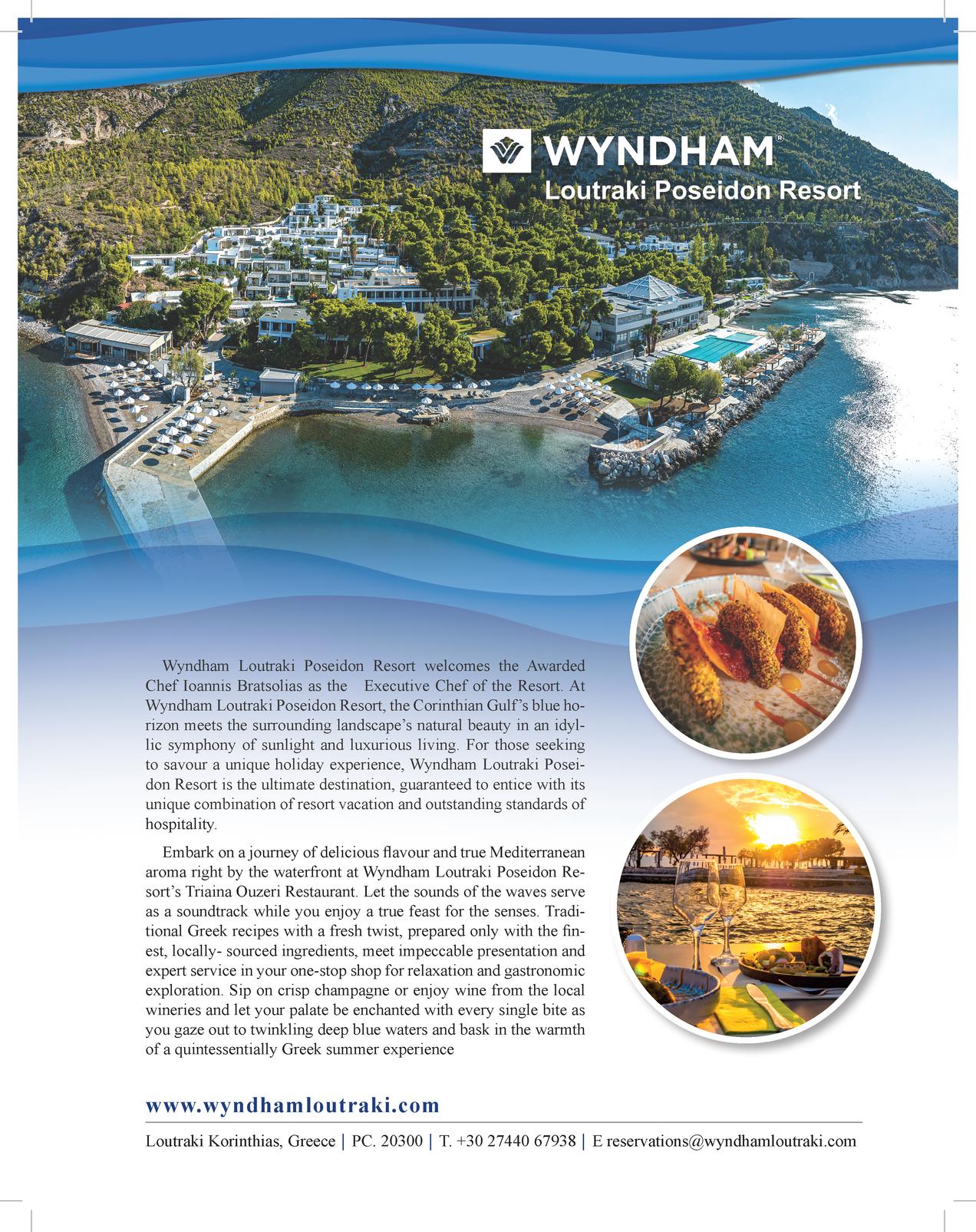
Advertising revenue manager: to join the CSF int advisory board
Responsibilities : To obtain advertisers and/or sponsors for the CSF int website and magazine .
This is a vital role to secure the success of our fundraising activities.
The positives , are to be at the forefront of making a serious financial difference
The negatives is that this is not a paid role and is based on voluntary support.
Experience within this field of work with good contacts is as vital as is the goodwill
If this is of interest please do not hesitate to drop me a line:
Fundraising Co-coordinator : To join the CSF int Advisory board.

This role is to assist develop and creative fundraising activities with CSF int members around the world.
An opportunity to stimulate and implement events and creative ways of fundraising
Working with chefs to help stimulate, plan, motivate and market fundraising activities, from dinner events , auctions, walks to skydives and everything in-between
This is a vital role that will help increase funds and support to those that need it most.
To retain cultural gastronomy, culinary heritage and traditional skills for generations to come
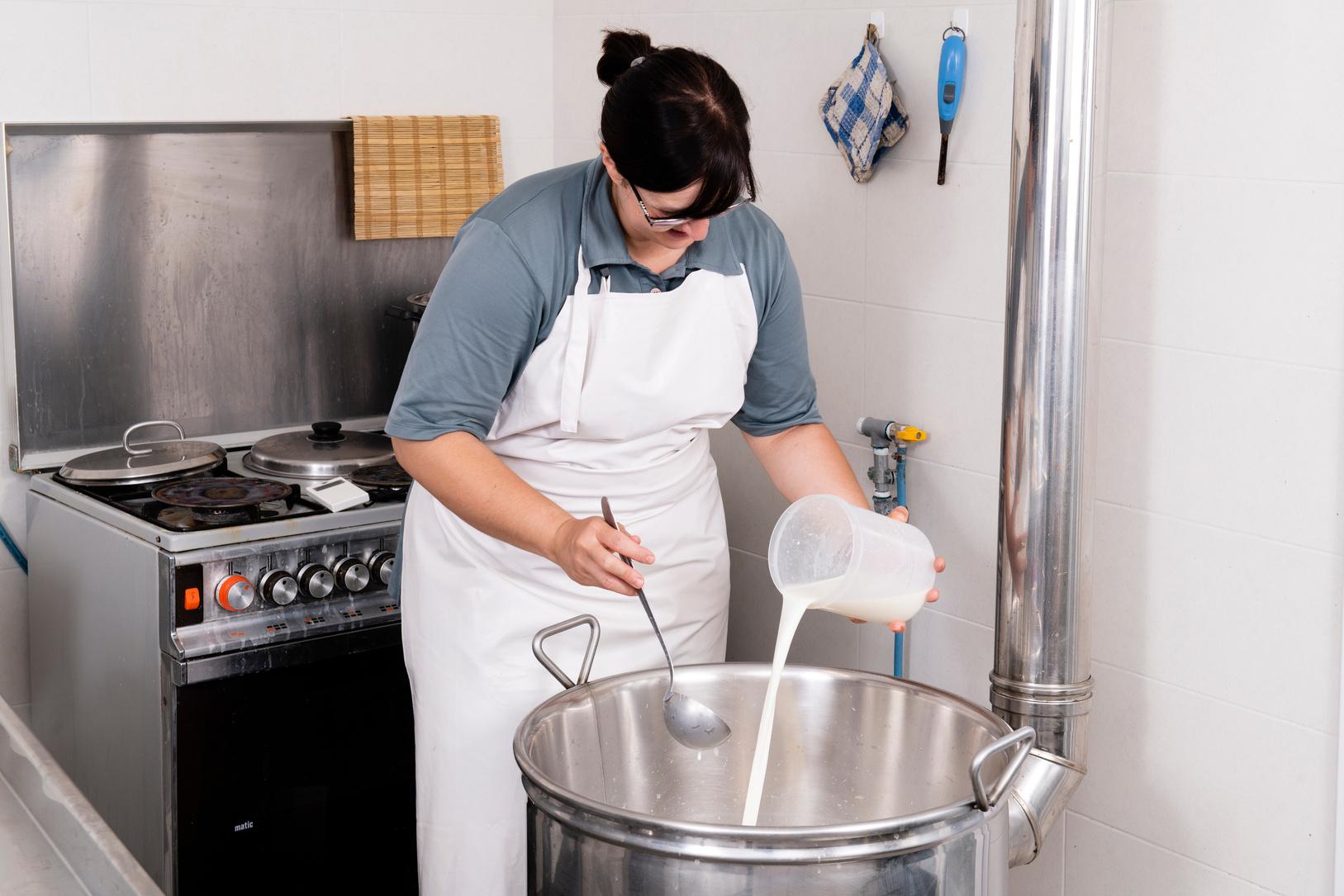
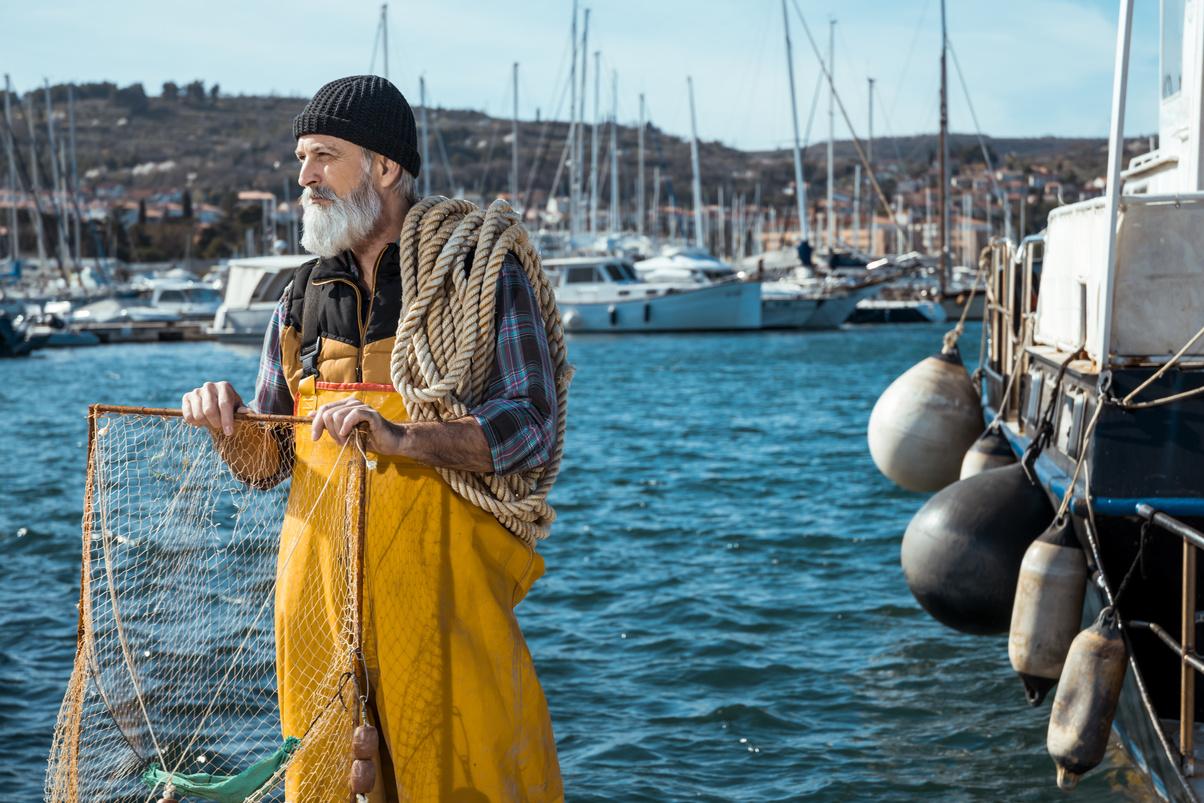
Positives: A role that is stimulating for anyone who enjoys working on creative events with the food and hospitality sector, chefs, foodies and stimulating activities
Negatives :This is not a paid role and is based on voluntary support .
The role requires an element of cultural understanding and the individual must be well organised ,enthusiastic a good communicator who is keen to take on responsibilities.
If this is of interest and you would like further info , please do not hesitate to drop me a line Info@alancoxon.com
Info@alancoxon.com
September 2023
CSF_int Fundraising event taking place in Peru with top Peruvian chefs, catering students and farmers.
This will be a high profile event with TV media presence/ coverage.
Many Peruvian farmers have lost their livelihoods due to the recent and longstanding El Nino rains and flooding, losing crops and livestock.
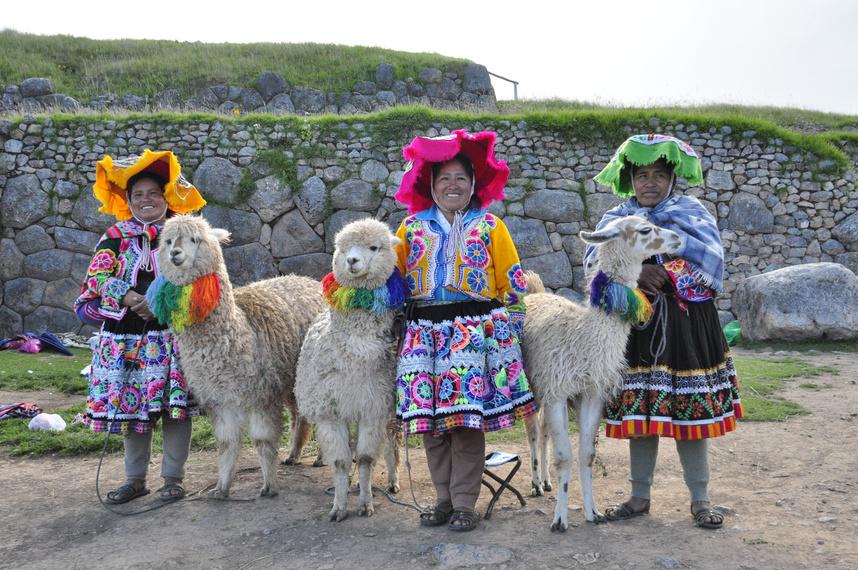
CSF_int aims to raise sufficient funds to purchase and replace lost items and to get the farmers back to work and provide food for the families and local communities once more.
A big thank you goes out to Juliana Romana for this excellent initiative, driving home every aspect of why CSF-int was initially established.
October 2023/24
Delighted to announce that CSF_int will be launching our own range of CSF_int Beers across the UK ( and hopefully export) .

Five British based CSF_int chef members have created unique flavoured brews that will be launching on the market throughout the later part of this year and early 2024. The beers ( all very different concepts) will be available in cans and on draught and a % of profits will go directly to CSF-int charity.
Launches and marketing activities will be carried out within various restaurants and pubs as well as via social media of which I hope you will see and hear more.
A big thanks goes out to Daren Liew , Ben Purton , David Mizon and Visen Anenden for taking part in this opportunity and for suffering the many beer tastings.
Thanks to CSF-int member Andy Burden and “Brew monkey” for nurturing this partnership and opportunity that will open eyes and flavour profiles!.
Email:
September 2023
CSF_int Awards announcement : As part of our gratitude and recognition for work carried out to support our activities, 2 members will receive our first CSF-int award
“Most funds raised by a CSF_int member award”
and
“Most support and work carried out behind the scenes award”.
I am hoping to grow this event year on year but for now best of luck to all.
How can you help?
Start by planning a charity CSF int dinner
Obtain new chefs, foodies, front of house, bakers, chocolatiers, or sommeliers to become members, happy to send you application forms.
Develop a charity walk, run, sports match, wine tasting, the list is endless and it can be developed so easily with minimum effort and maximum rewards.
Obtain new advertisers for the magazine and website. It's just 150 Eu for a full page.
Recently cheese fe creators a Jokubaus
Audrius w Lithuania cheese fa to organi discussio festivalto family, as contribut
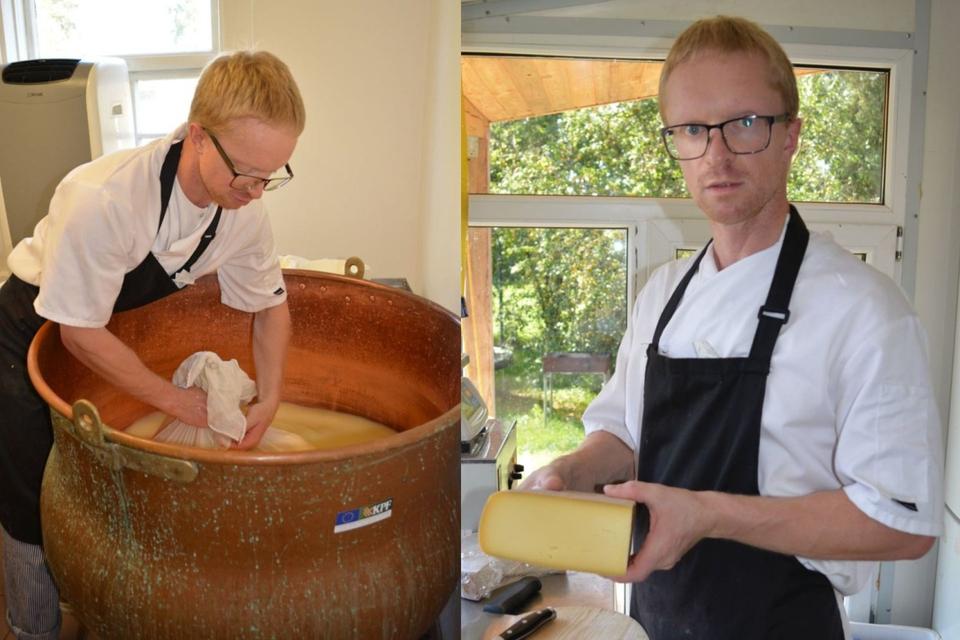

During th with our f dinners w small pro program
Audrius J restauran the Velve
More than a hundred participants gathered for this event Minister of Agriculture of the Republic of Lithuania Kęstutis Navickas, Audrius' business partner MrGiedrius Tevelis, and the wife of Audrius, Mrs Jovita JokubauskieneVilnius University professor Rimvydas Lauzikas gave a report on the traditions of dairy farming and cheese production in Lithuania, also the other speakers I also had to present the activities of CSF, telled about the organization
Also, before the festival, information was spread about the CSF initiative, to donate the profit from this year's dinner at the "Velvetti" restaurant to the Audrias family and to support the "Varinis puodas" cheese shop At the dinner, the Minister of Agriculture of the Republic of Lithuania, friends of Audrias We managed to collect 1200 euros These funds will reach Mr Jolita Jokubauskienė Also, close friends and I discussed a plan to help keep this farm going Planning for next year's cheese festival and its expansion begins Three weeks after the death of Audrius, the farm continues to operate and cheese continues to be produced

